Collecting the Odawara “Gundam Manhole Card” & Exploring Odawara Castle!
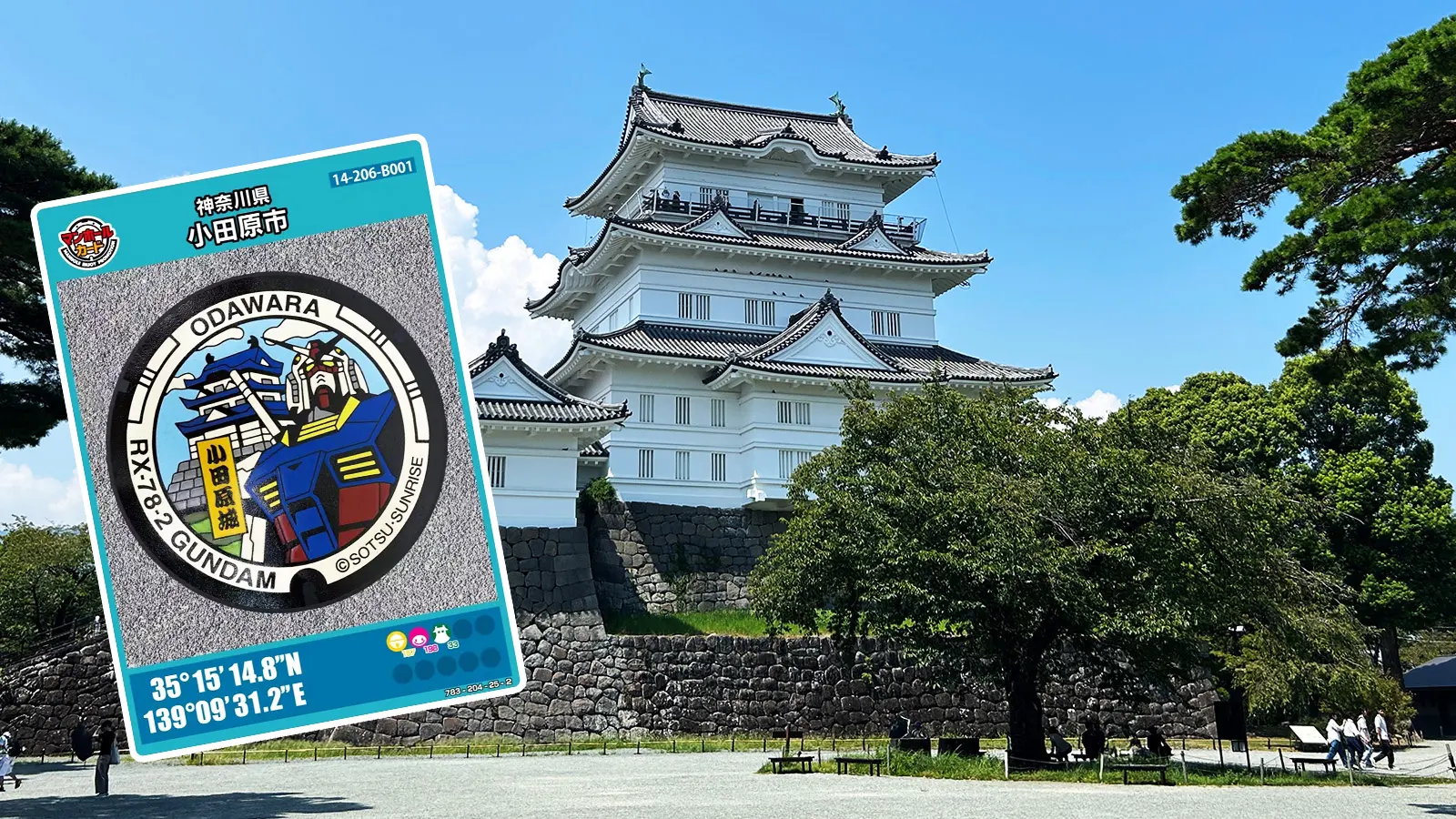
During summer vacation, I headed to Odawara with my sons—who are practically my little assistant reporters now—to collect the limited Odawara Gundam Manhole Card.
On the way, an enormous castle suddenly appeared in the middle of the city. Of course, that’s Odawara Castle!
This time, I’ll be reporting on the journey: “Pick up the Gundam Manhole Card at Odawara Station → Sneak into Odawara Castle.”
Arriving in Odawara!
After about 2 hours from Tokyo, we arrived in Odawara! Hanging in the station was a giant lantern.
I love touches like this—it instantly gives you that “I’m on a trip” vibe. The view outside the station was surprisingly urban.

The city of Odawara has a refined, castle-town atmosphere. Just walking around lifts your spirits.
Here’s the “Castle Town Market,” packed with souvenir shops.
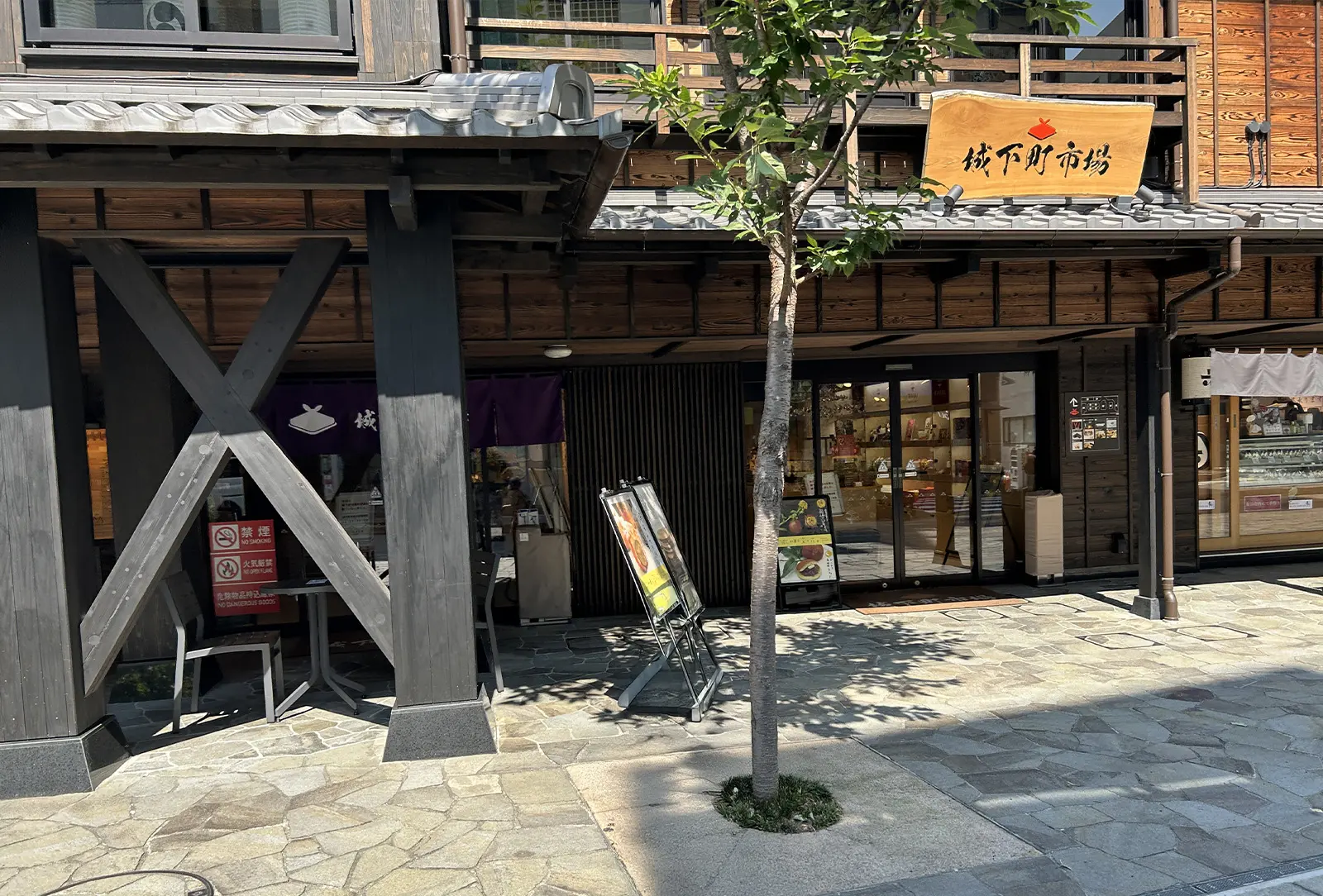
Even Lawson convenience stores are styled to match the castle town aesthetic!
Similar to Kyoto, where signs are toned down to preserve the scenery.
Of course, inside it’s just a regular Lawson (lol).
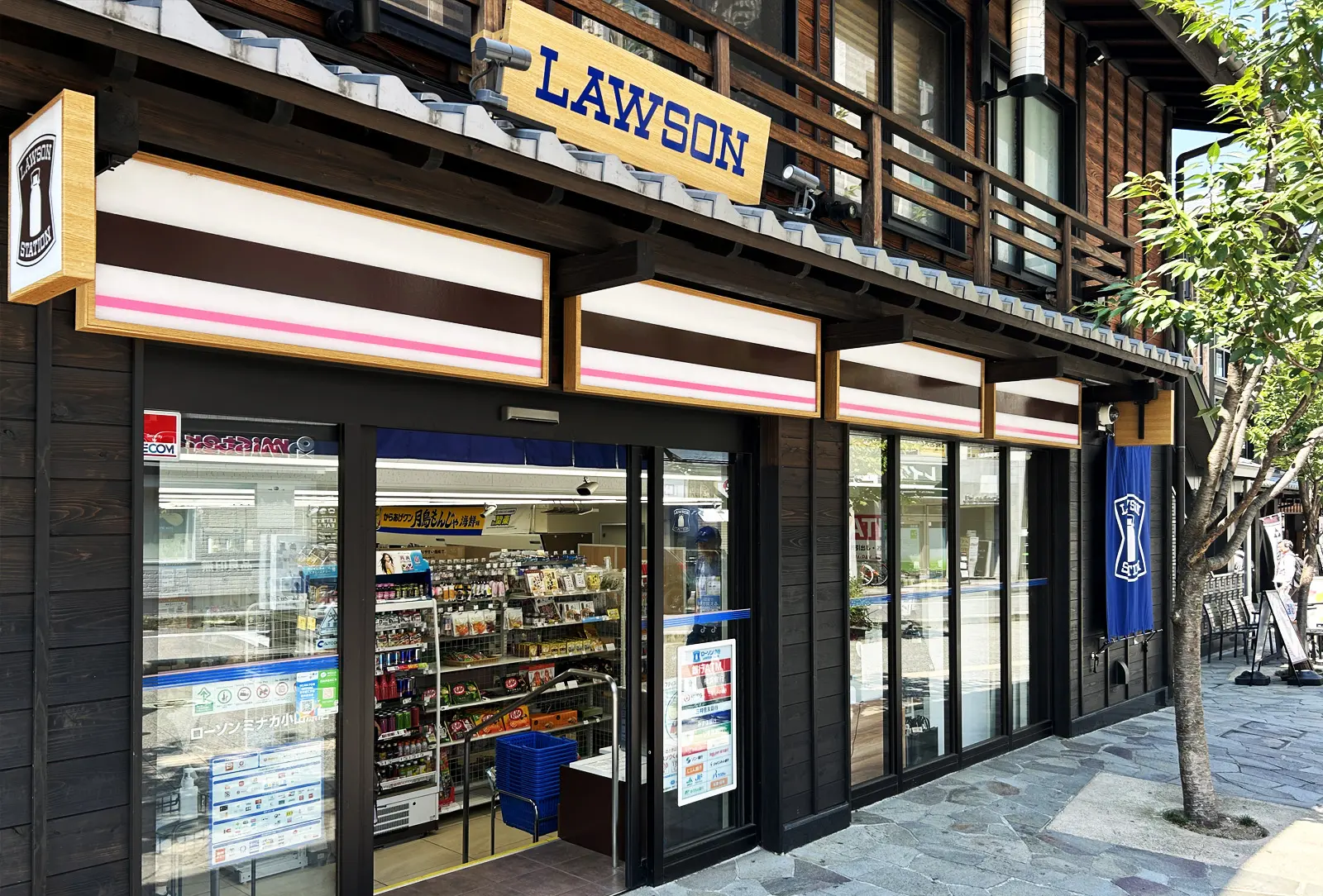
Even the ground has playful designs, like these cute “Daimyo Procession” illustrations.
Beyond the Gundam manholes, the whole city is full of creative details—walking alone is fun!

On the Hunt for the Gundam Manhole
After exploring, we headed to our main destination: the “Daiya Shopping Street,” where the Gundam manholes are installed.
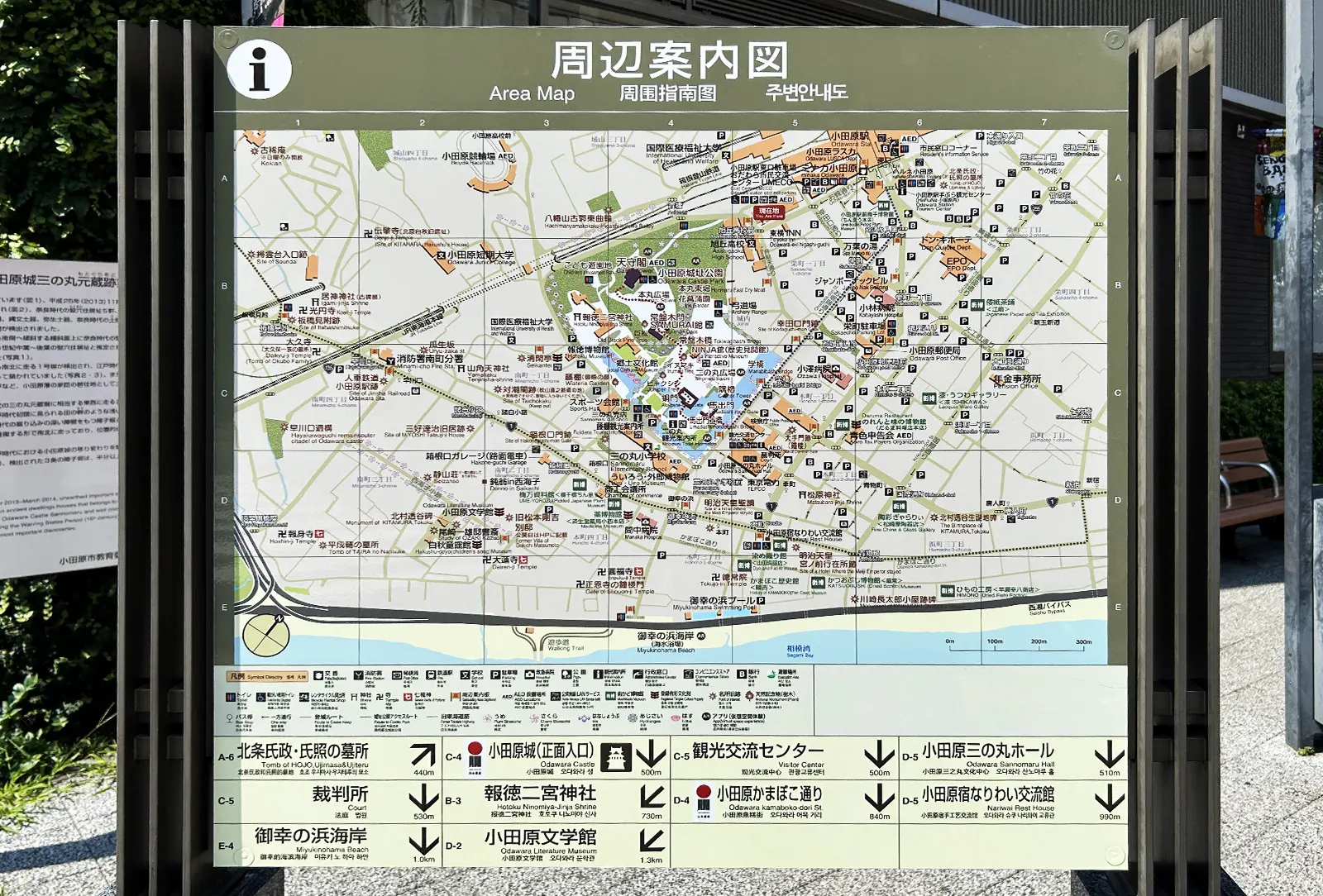
While walking through the streets, a massive structure appeared in the distance—Odawara Castle!
I was so focused on the manholes I’d almost forgotten about it.
The manhole card distribution spot also happens to be right near the castle at the “Odawara City Tourist Exchange Center.” No way we could skip this!

Gundam Manhole Found!
And then… there it was! The Gundam manhole!
Featuring RX-78-2 Gundam alongside Odawara Castle, it’s way too powerful for a manhole cover.
Totally badass. After snapping way too many pics,
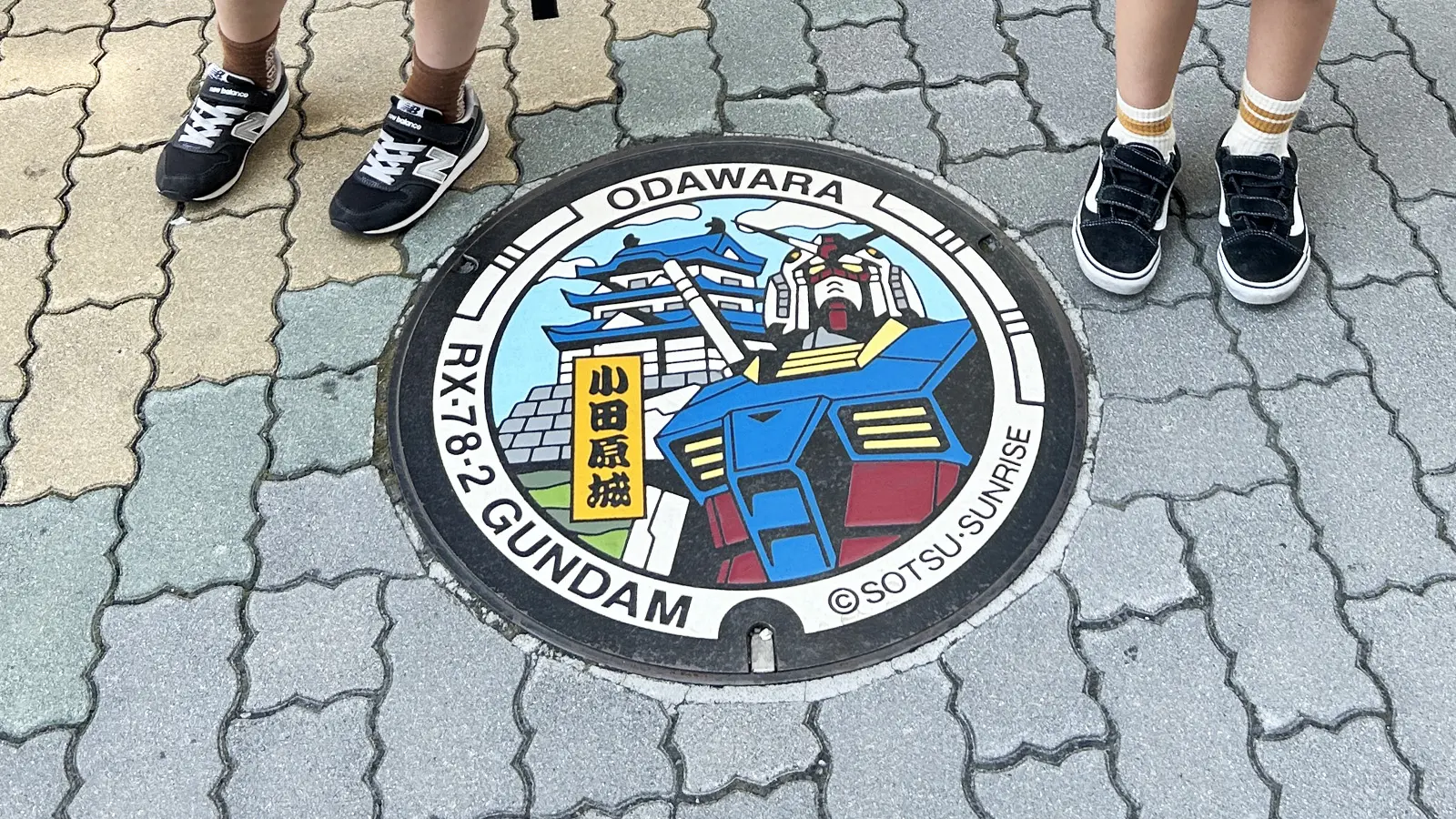
we headed straight to the “Odawara City Tourist Exchange Center.”
It was a 15-minute walk under the blazing sun (normally just 10 minutes). We cooled off with water breaks before finally arriving!
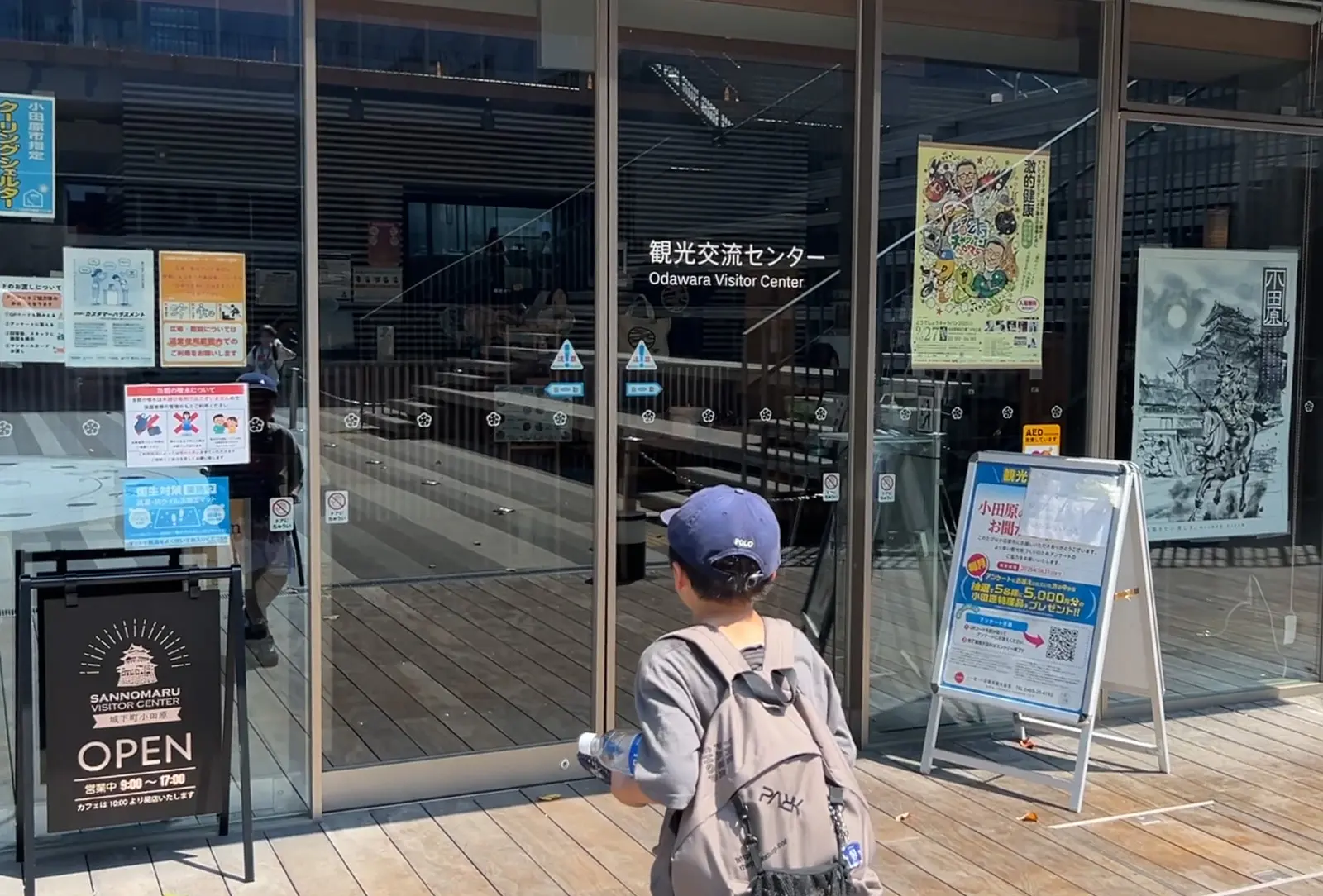
Inside, there’s even a café—perfect for a pit stop.
After filling out a survey, we successfully got the Gundam Manhole Card!
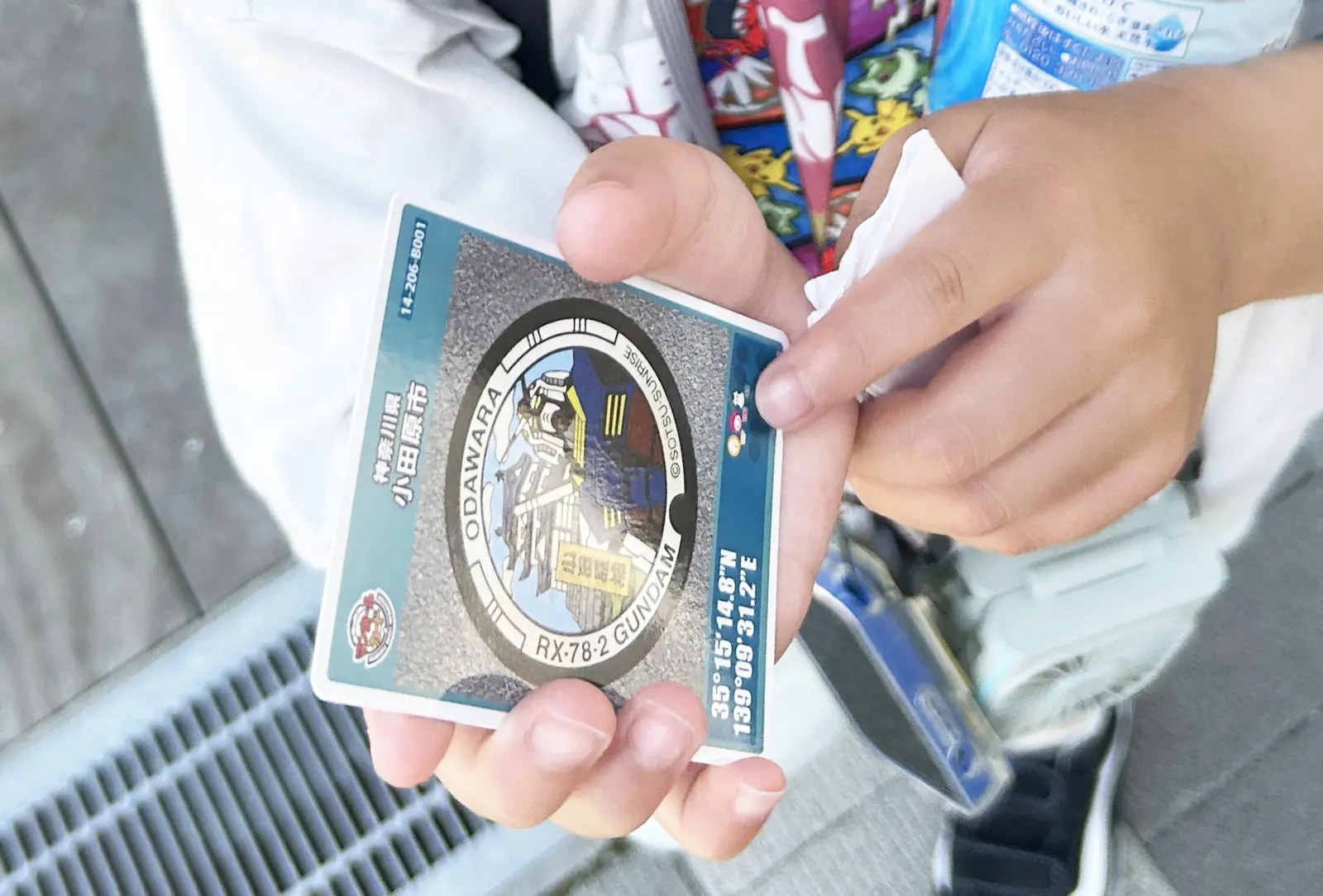
Heading into Odawara Castle!
Right outside the Tourist Exchange Center is the entrance to Odawara Castle!
What a perfect setup. I hadn’t seen a real-life castle since Osaka Castle on an elementary school trip.

The moment you pass through the first gate, it feels like another world.
All I could say was “Wow!” (lol).
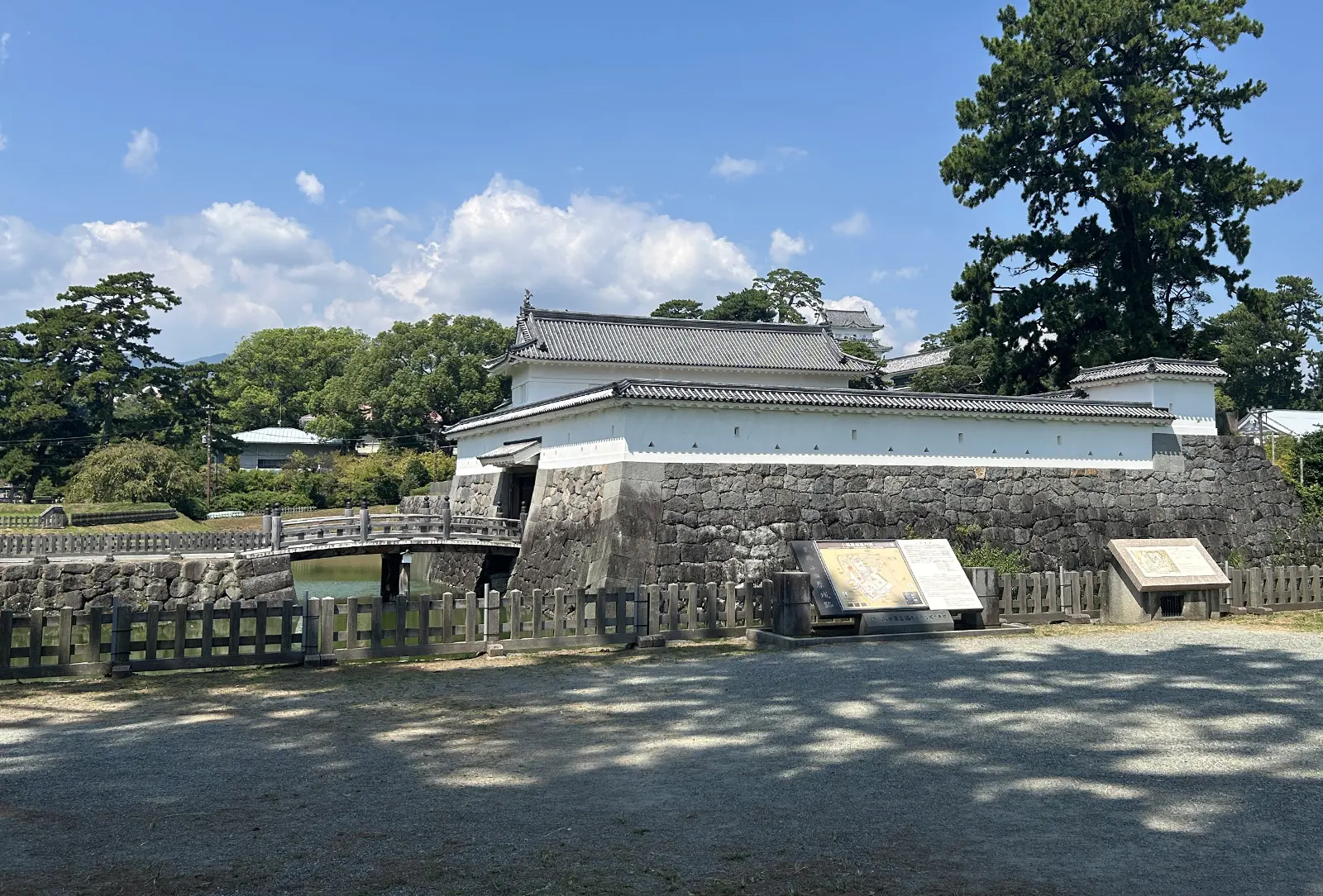
Akagane-mon (Copper Gate)
Next up: the gate called Akagane-mon (Copper Gate).
The Copper Gate was the front gate to the castle’s second bailey. It connected from the Umaya-kuruwa across the Sumiyoshi Bridge, serving as the main approach. To the north of the gate stood the lord’s residence. It is believed to have been constructed during the early Edo period when Inaba Masakatsu was the castle lord. The name “Copper Gate” comes from the copper ornaments used on its massive doors.
─Excerpt from Odawara City’s official website
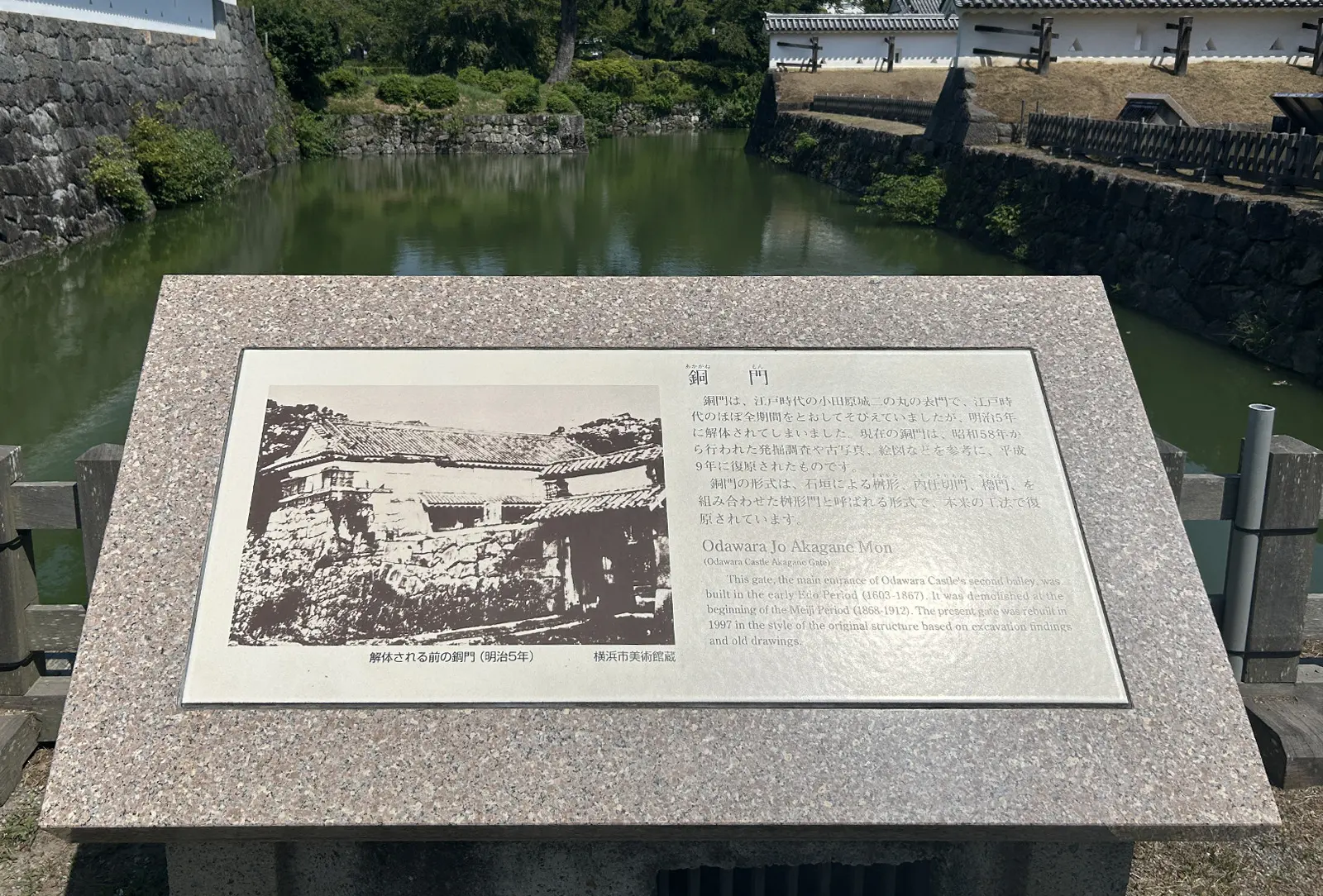
Crossing the Sumiyoshi Bridge, through a small entrance on the other side…
the massive Copper Gate suddenly appears. The anticipation builds!
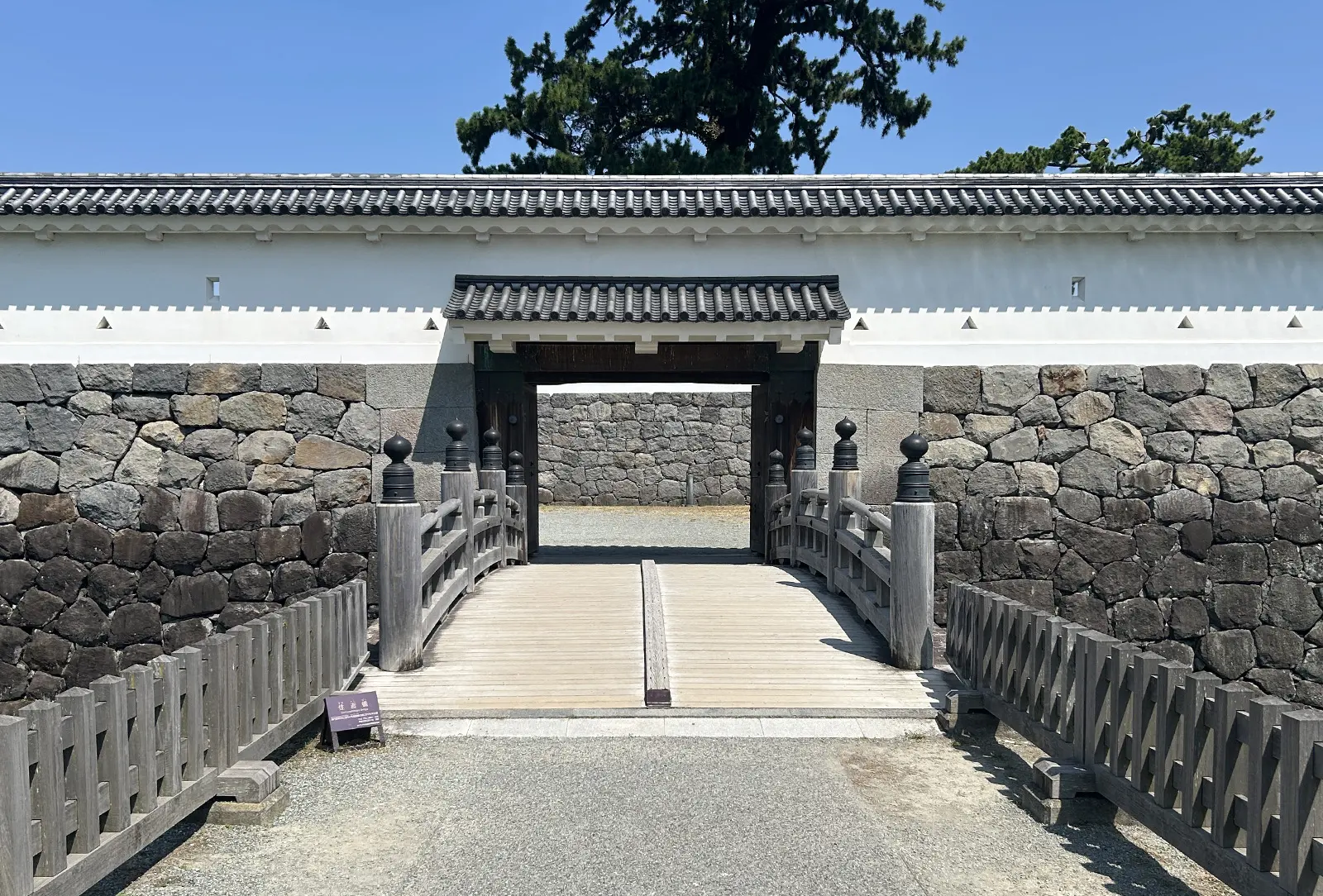
BOOM! Enormous! This is Akagane-mon.
It’s bigger than my whole family house back home.
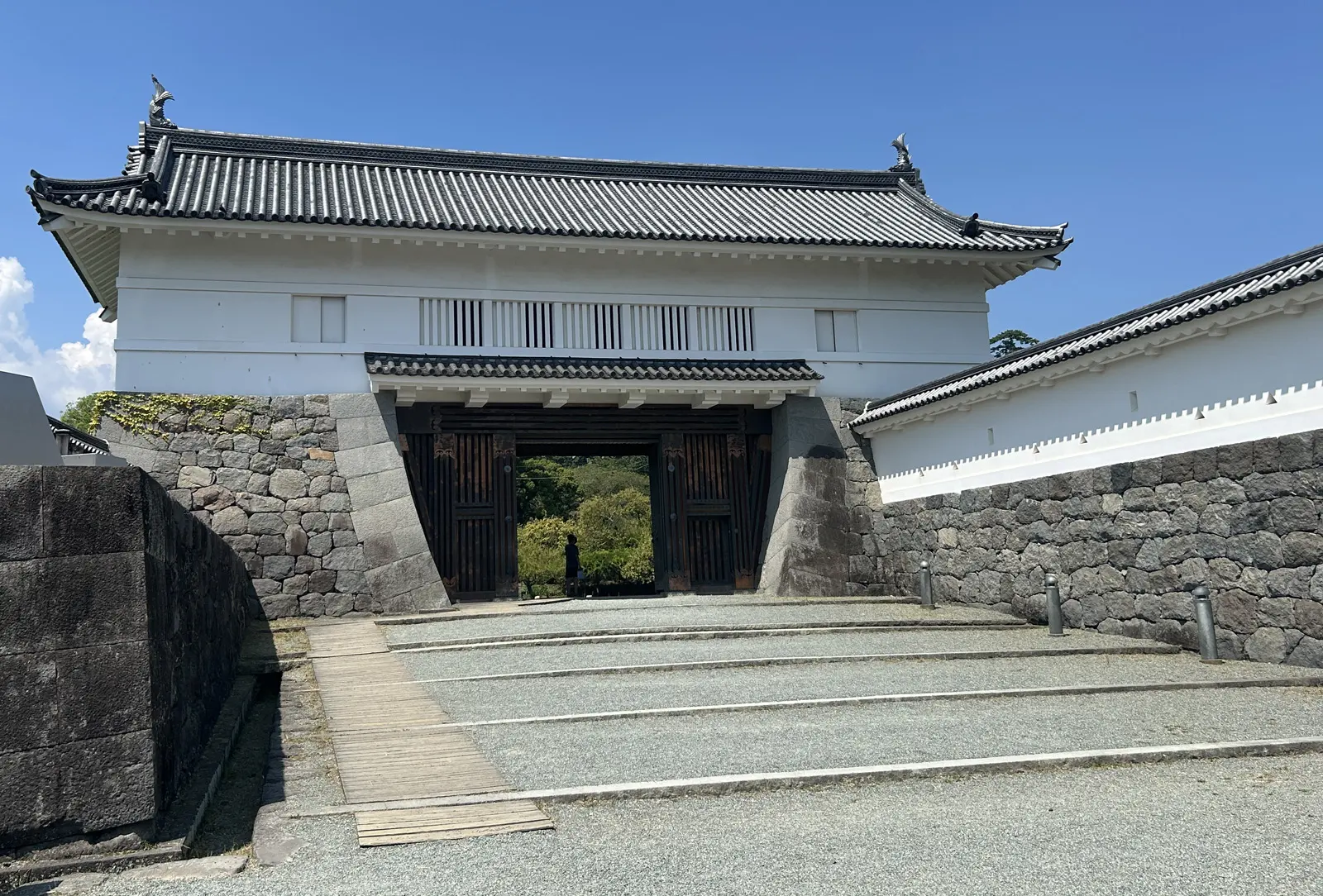
Up close, its sheer power is overwhelming.
Fun fact: this gate was reconstructed in 1997.
The current Copper Gate was restored in 1997, based on excavations from 1983, old photos, and historical drawings. Built in its original style, it’s a masugata-mon gate with stone walls, inner doors, and a turret gate—reconstructed with authentic techniques.
─Excerpt from Odawara City’s official website
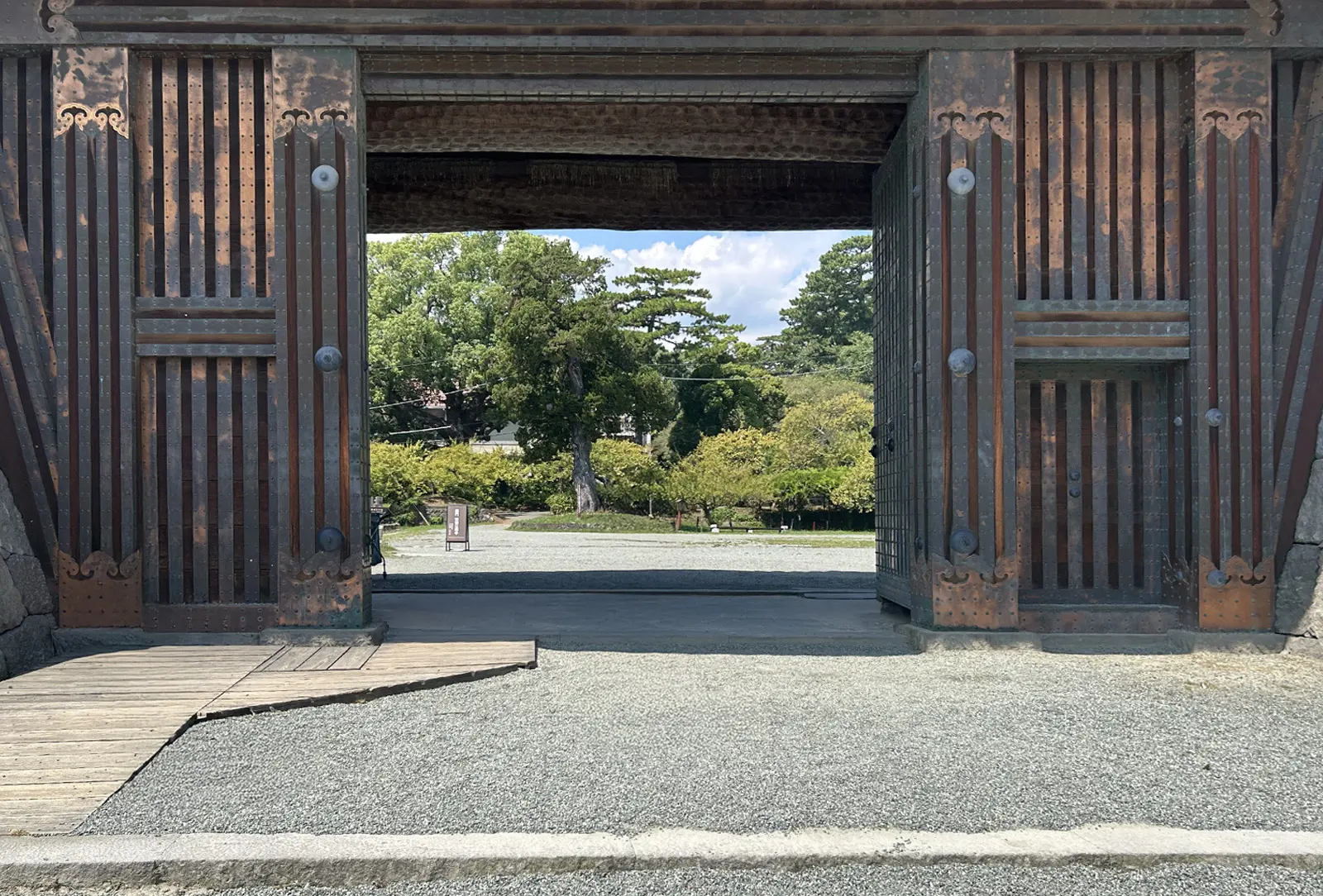
Inside, two massive beams stretch overhead.
Makes you wonder what’s above them...
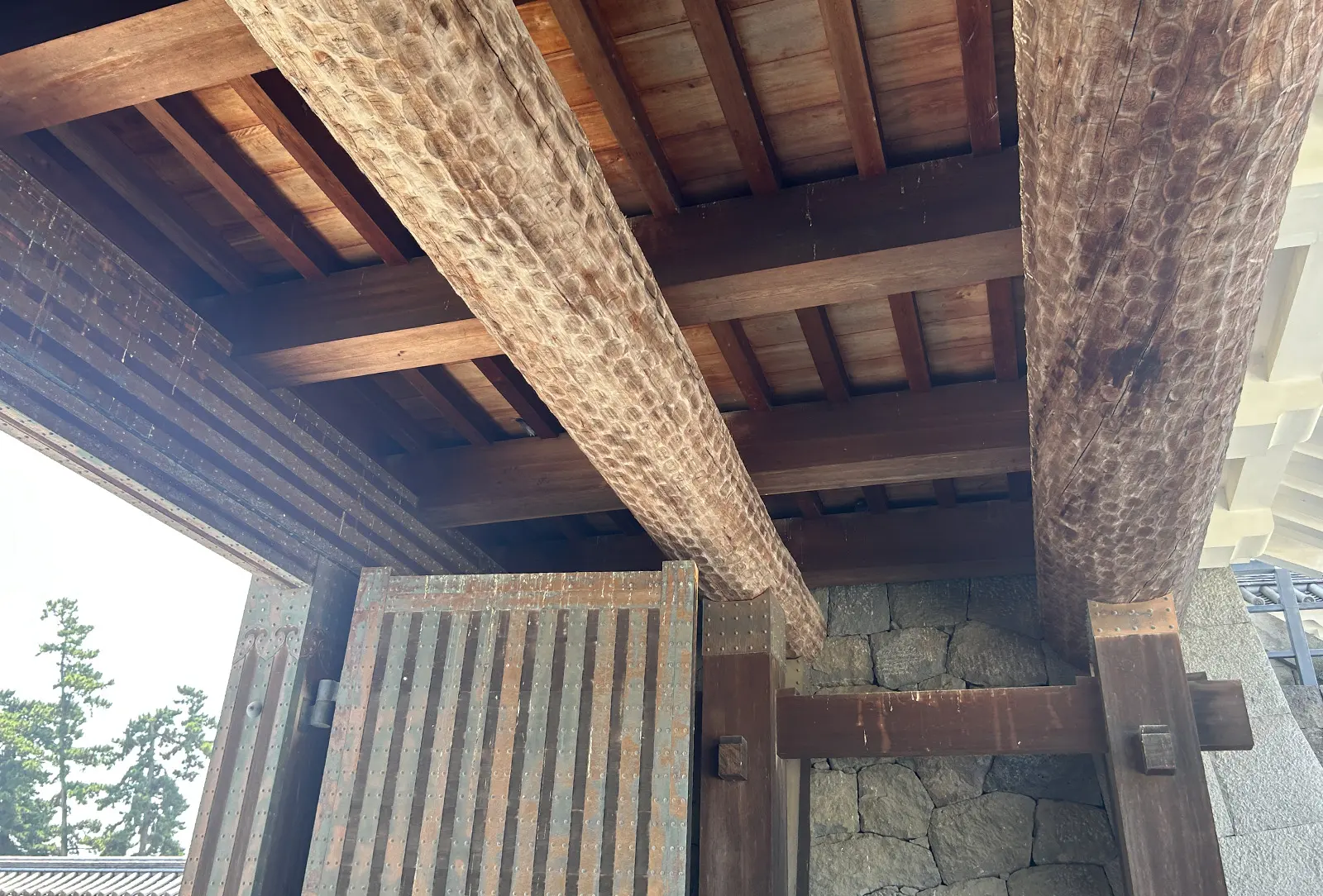
Even from the backside, it’s insanely solid.
The doors are basically as thick as walls.
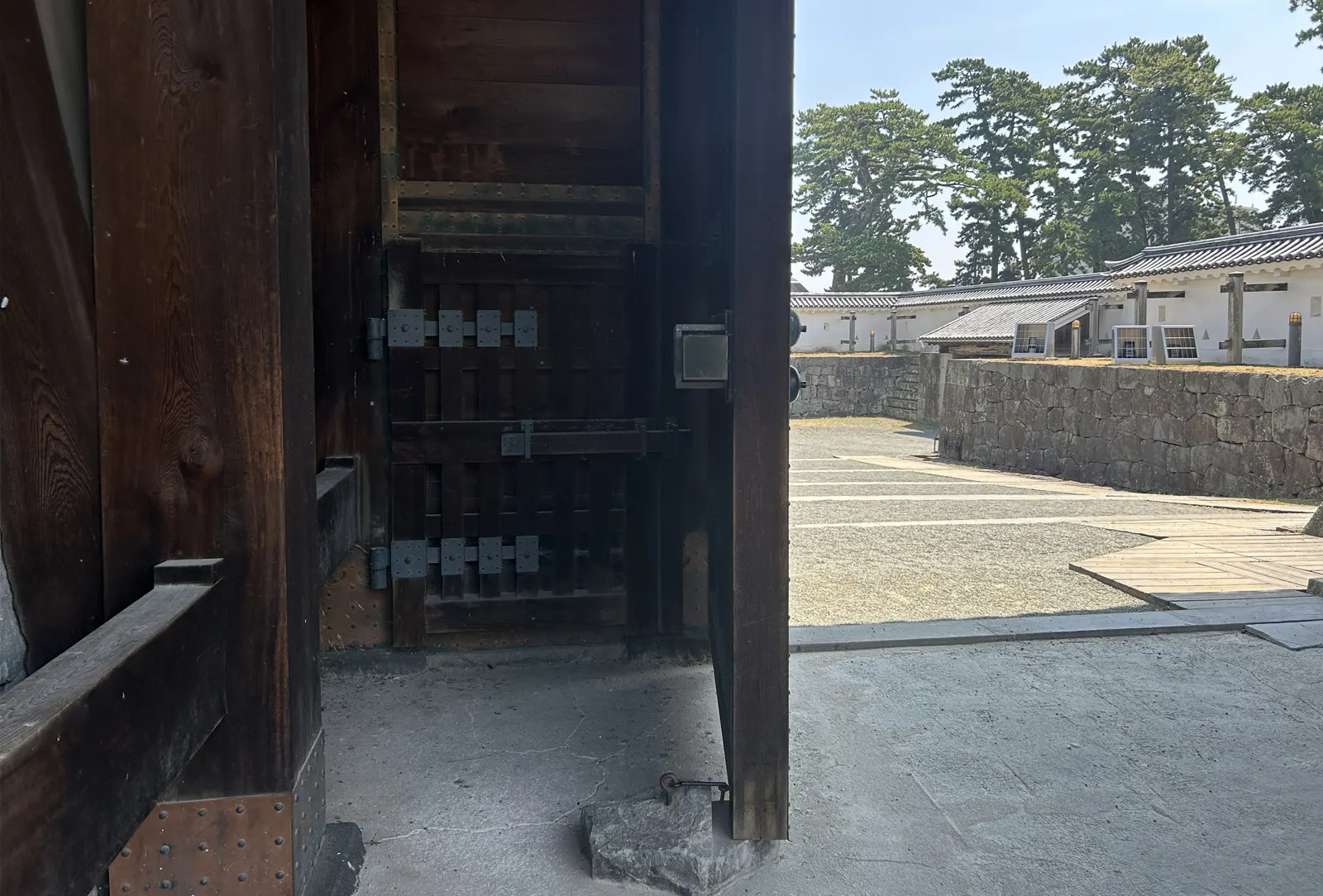
Detour to the NINJA Museum
After passing through the Copper Gate, we spotted the “NINJA Museum”!
It’s an interactive attraction featuring trick doors, puzzles, and ninja training. The kids went wild.
It was fun, but I’ll save the details for another article.
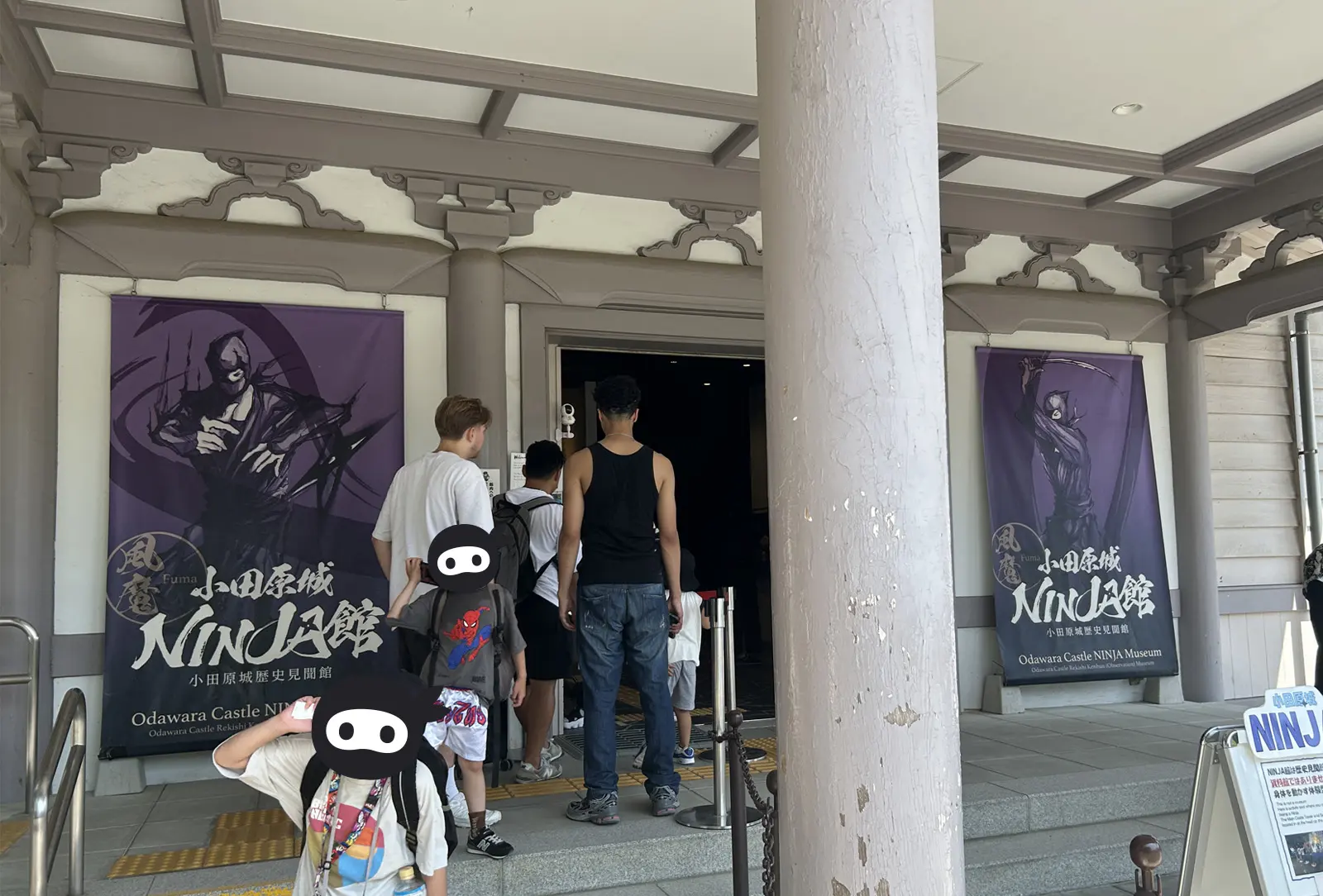
Tokiwagi-mon (Evergreen Gate)
Leaving the NINJA Museum, we made our way toward the main keep.
Cross another bridge, climb some stairs, and…
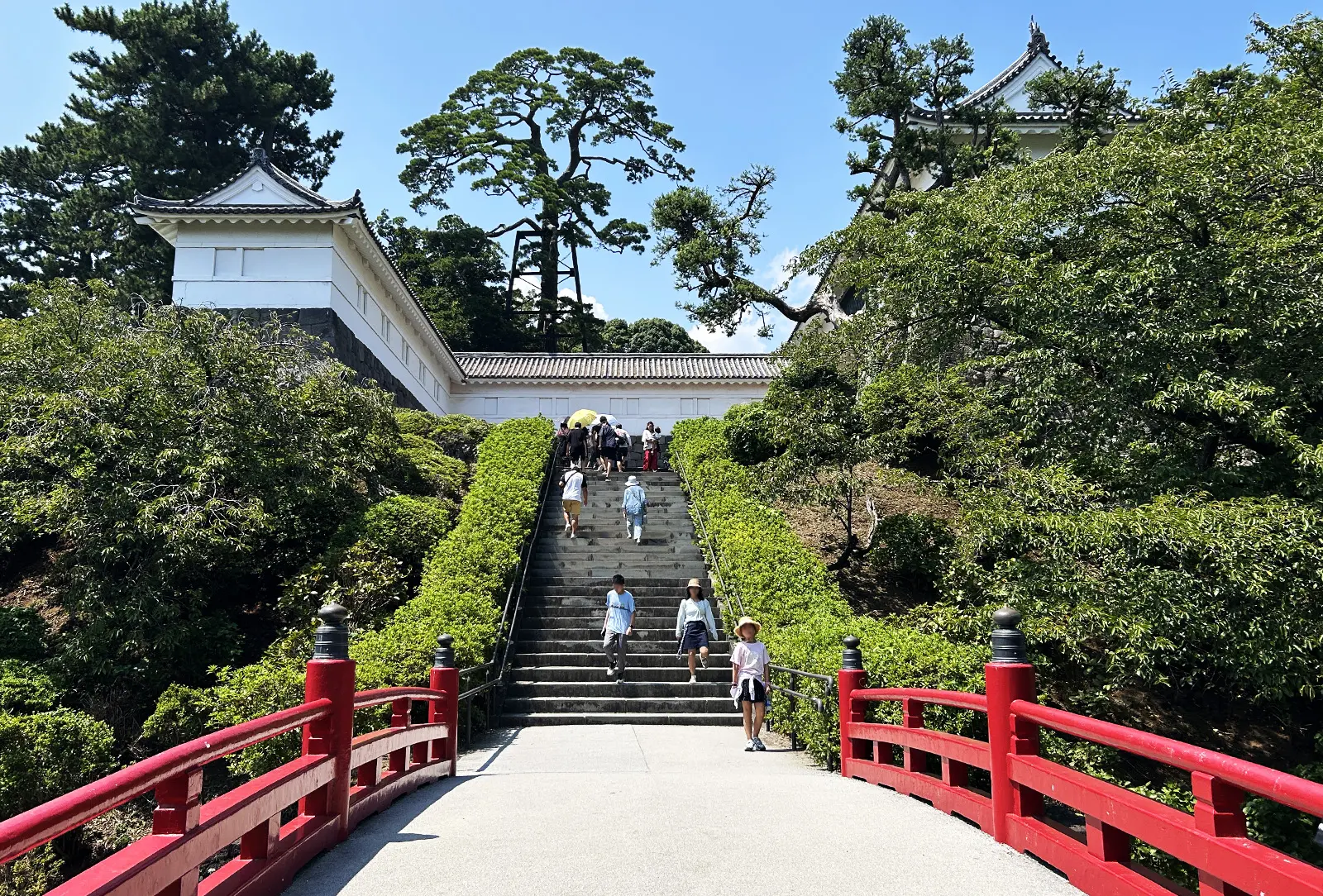
Another gigantic gate stands tall!
This is Tokiwagi-mon, the main gate to the inner bailey, a crucial defensive stronghold.
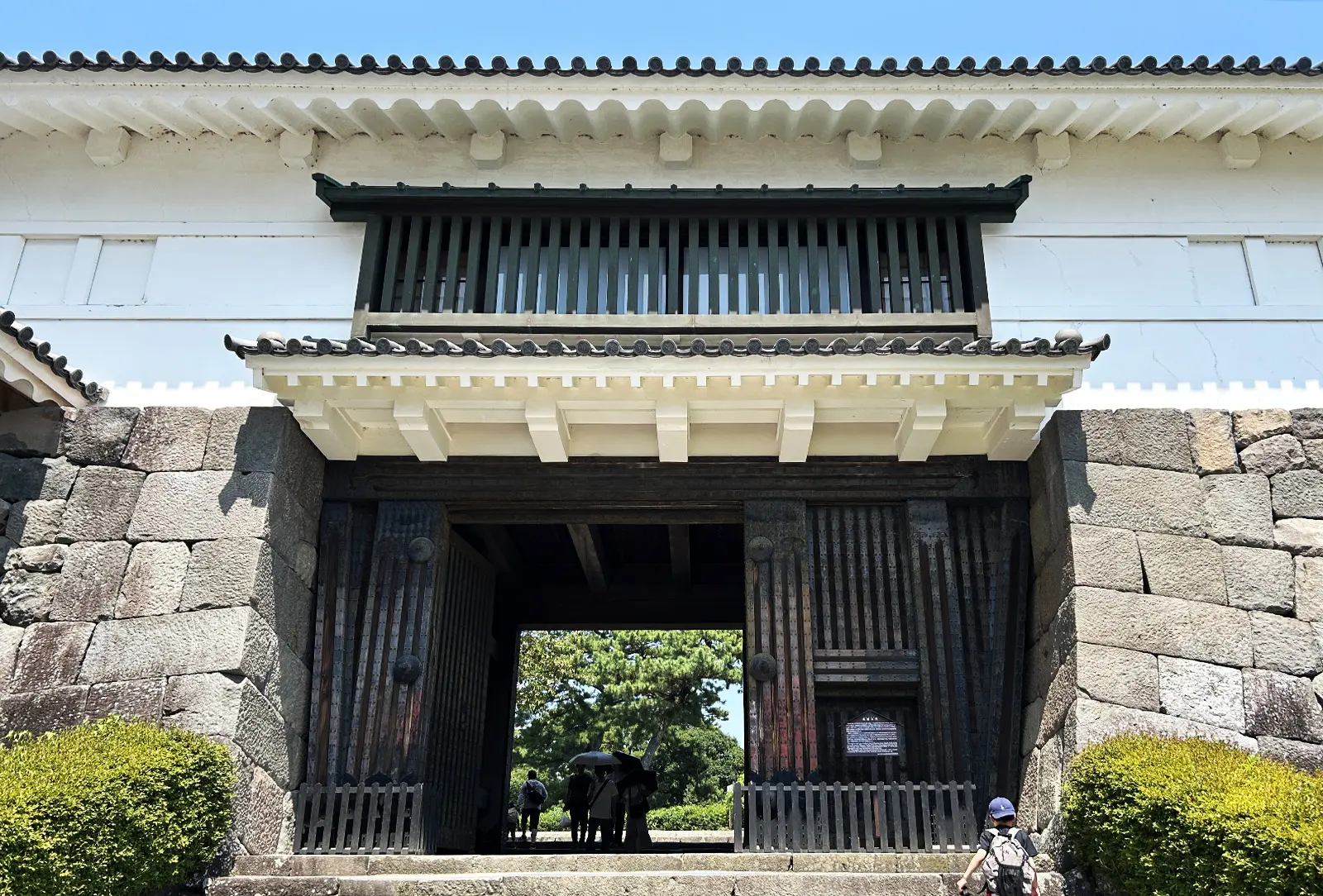
The Honmaru (main bailey) of Odawara Castle had two gates: Tokiwagi-mon and Iron Gate. Tokiwagi-mon was the main entrance, built larger and sturdier than the others. With its long storehouse (tamonyagura) and towered gate, it was key for defense. Records show it existed from the early Edo period. After collapsing in the 1703 earthquake, it was rebuilt in 1706 and stood until the castle’s abolition in 1870.
─Excerpt from Odawara Castle’s official site
The gate looks armored, reinforced heavily with iron fittings, giving it a tough vibe.
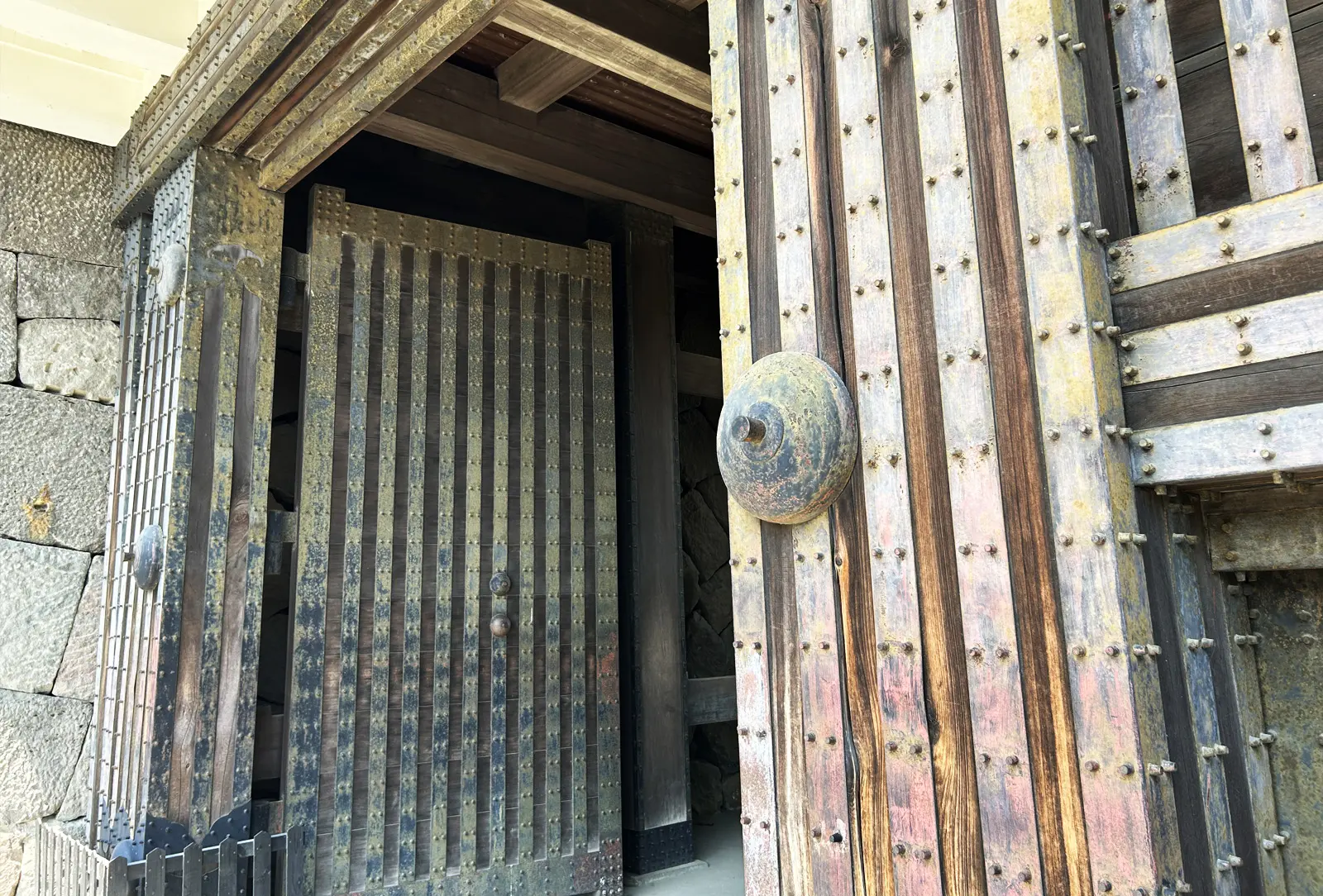
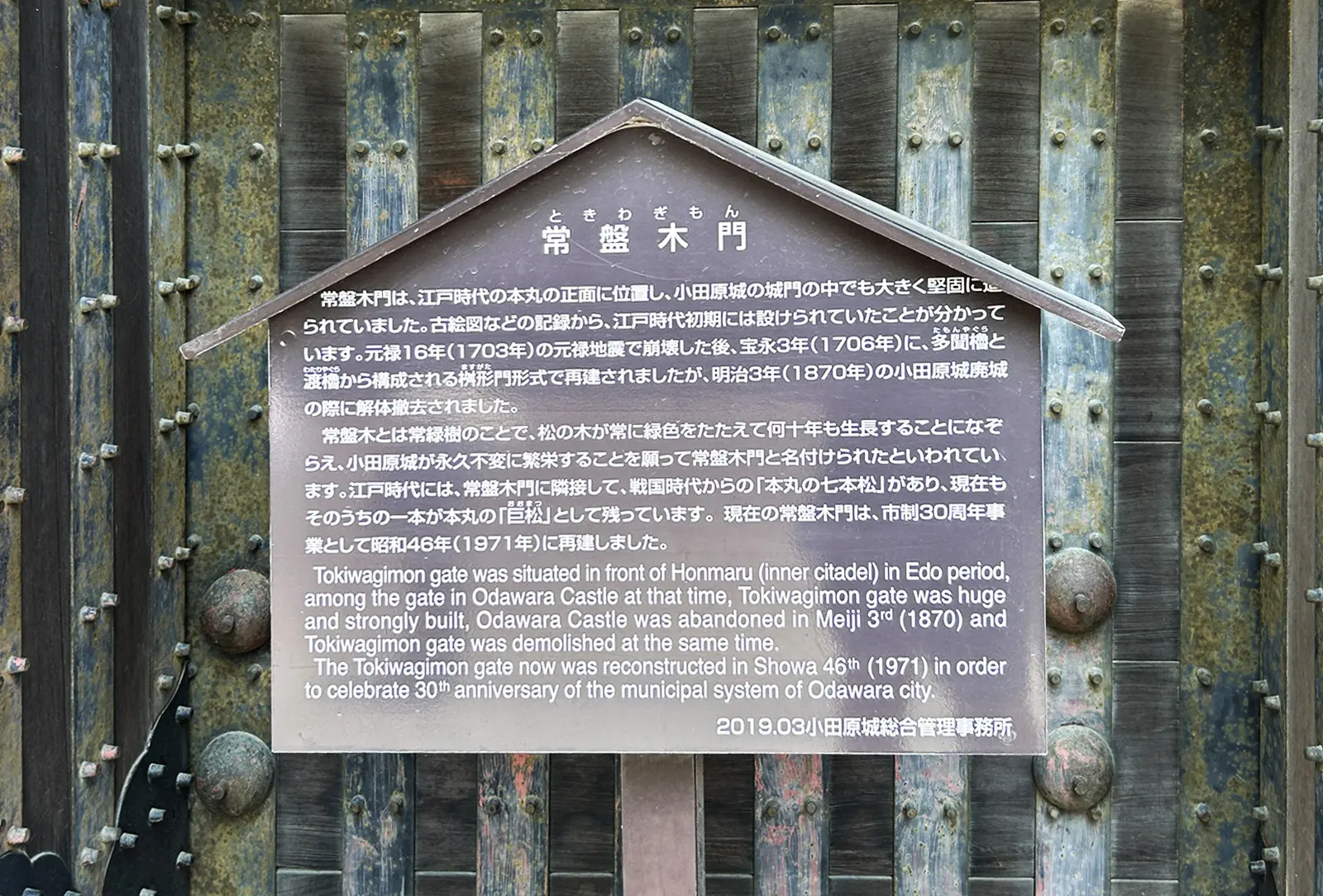
Inside, compared to Copper Gate, it’s much simpler.
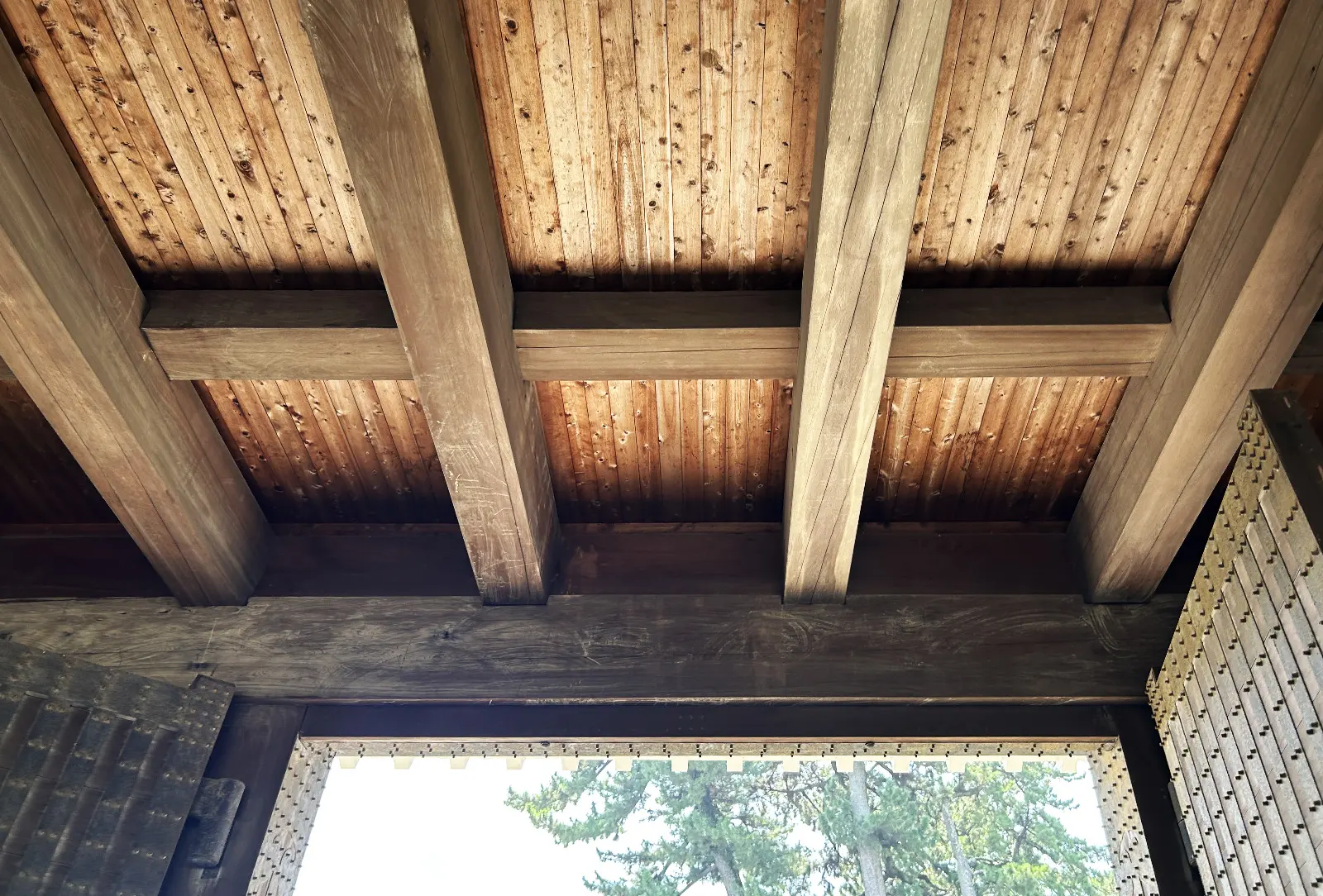
Heading to the Tenshukaku (Main Keep)!
Passing through Tokiwagi-mon, at last the full view of Odawara Castle’s Tenshukaku (main keep) appears! Honestly, it’s breathtaking.
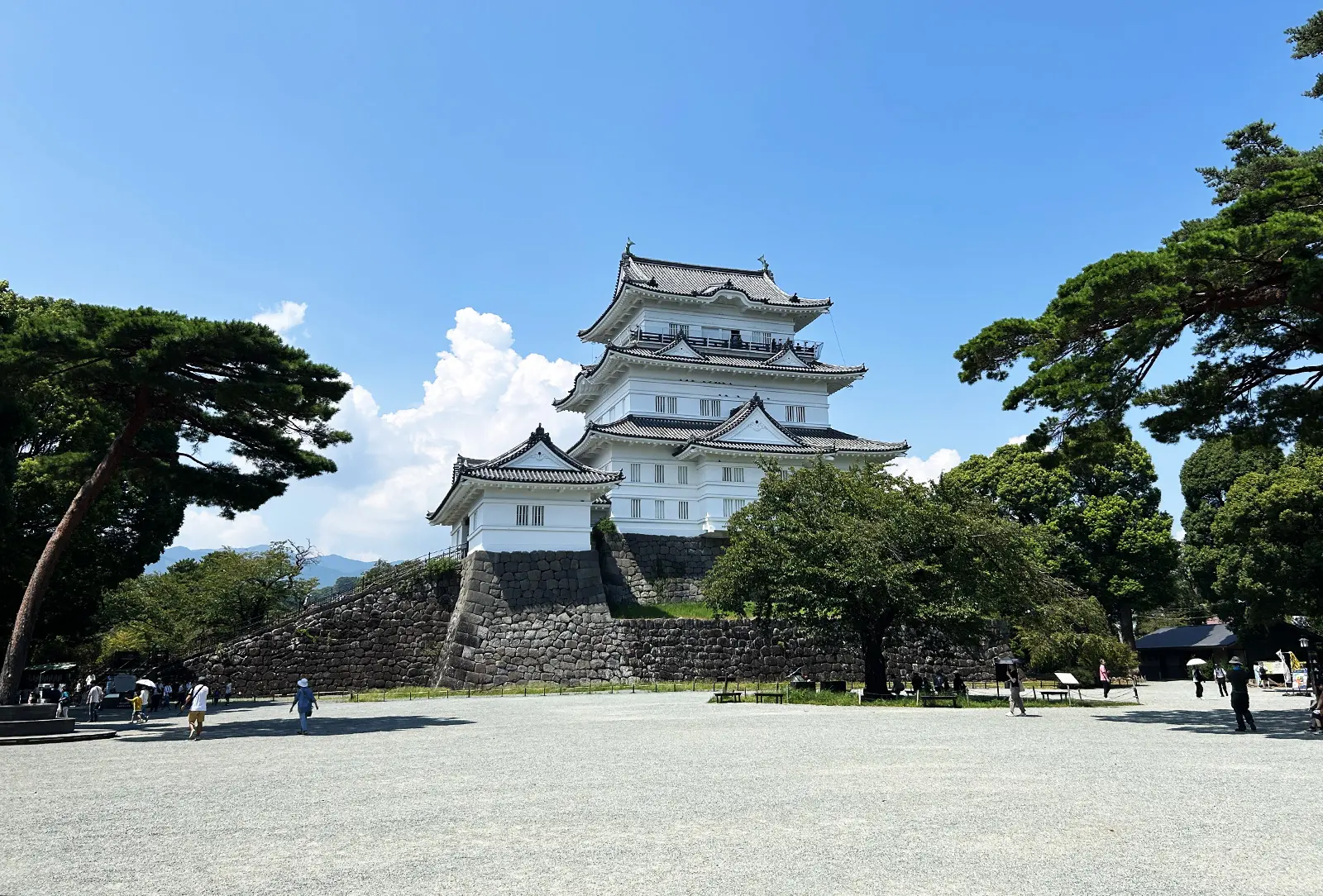
In the plaza, you can try shuriken throwing, visit souvenir stalls, or even dress in samurai armor.
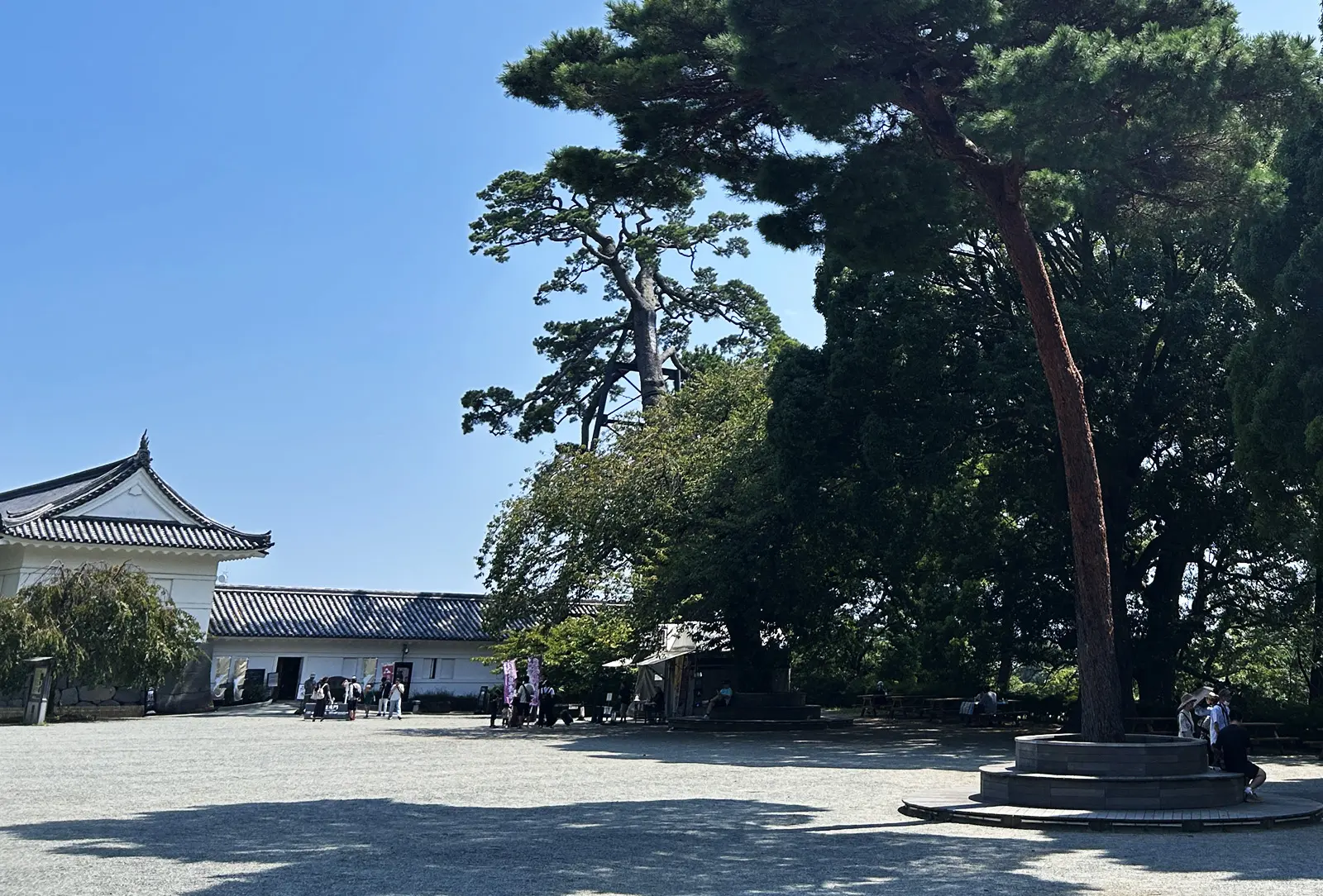
Of course, we tried the armor! Just 500 yen—super cheap.
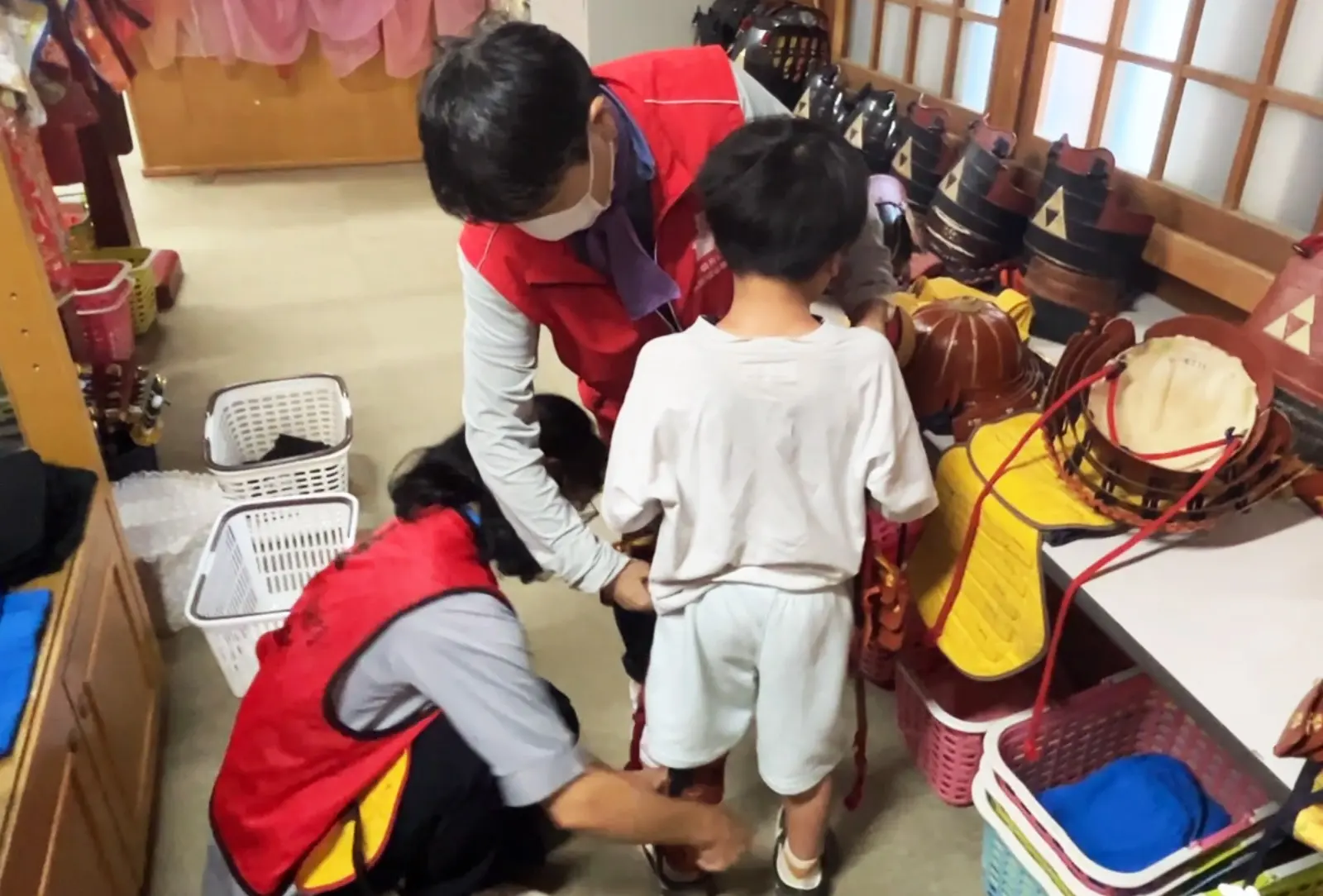
After suiting up, we took commemorative photos with Odawara Castle in the background. (Note: you can’t enter the main keep in armor.)
And yes, my kids loved the toy swords so much I ended up buying two twin-sword sets (lol).
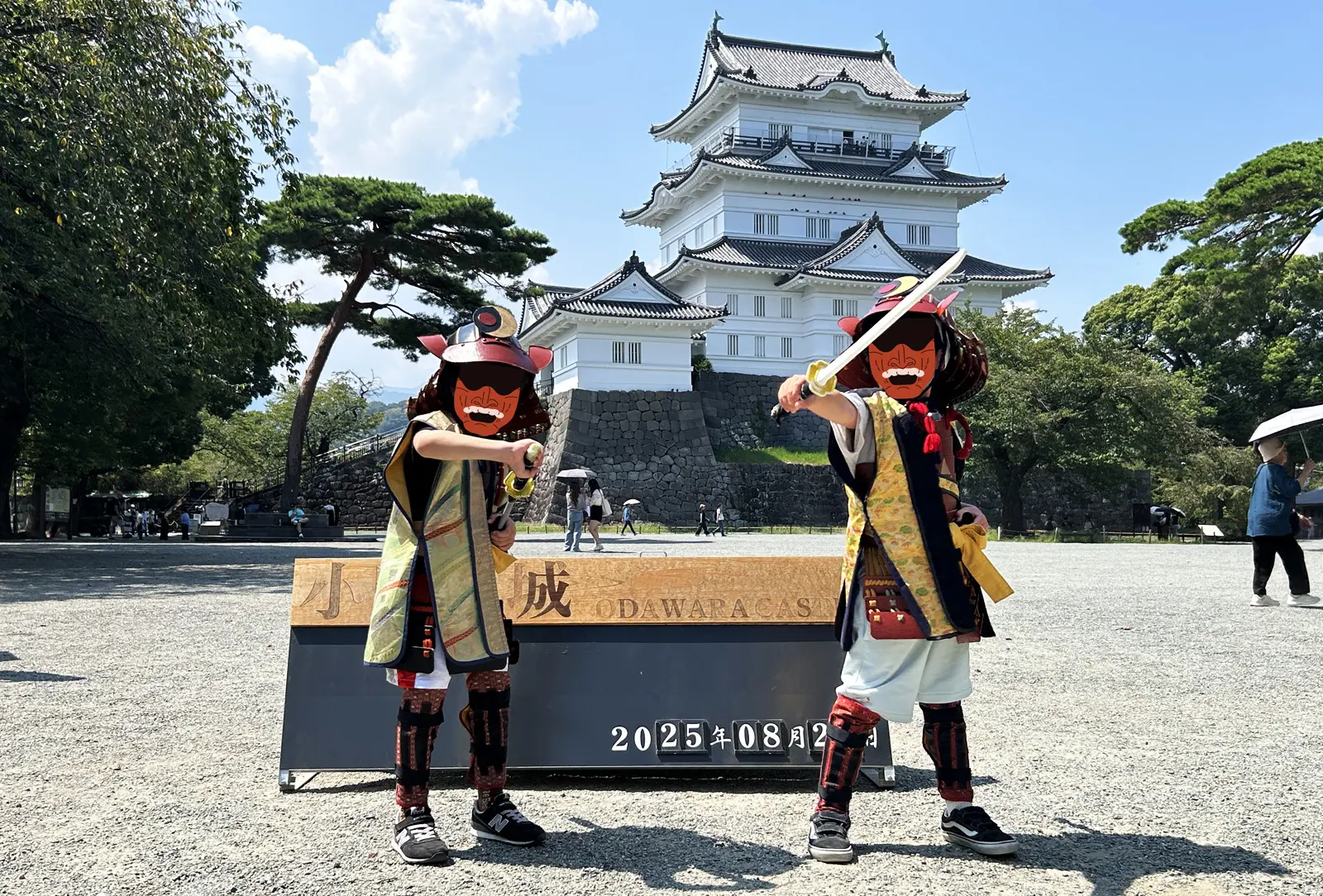
Taking a Break
Before heading into the main keep, we stopped at Honmaru Chaya, a little restaurant near the castle.
They serve dishes inspired by the Hojo clan, and the air-conditioning was a lifesaver—truly an oasis in the summer heat.
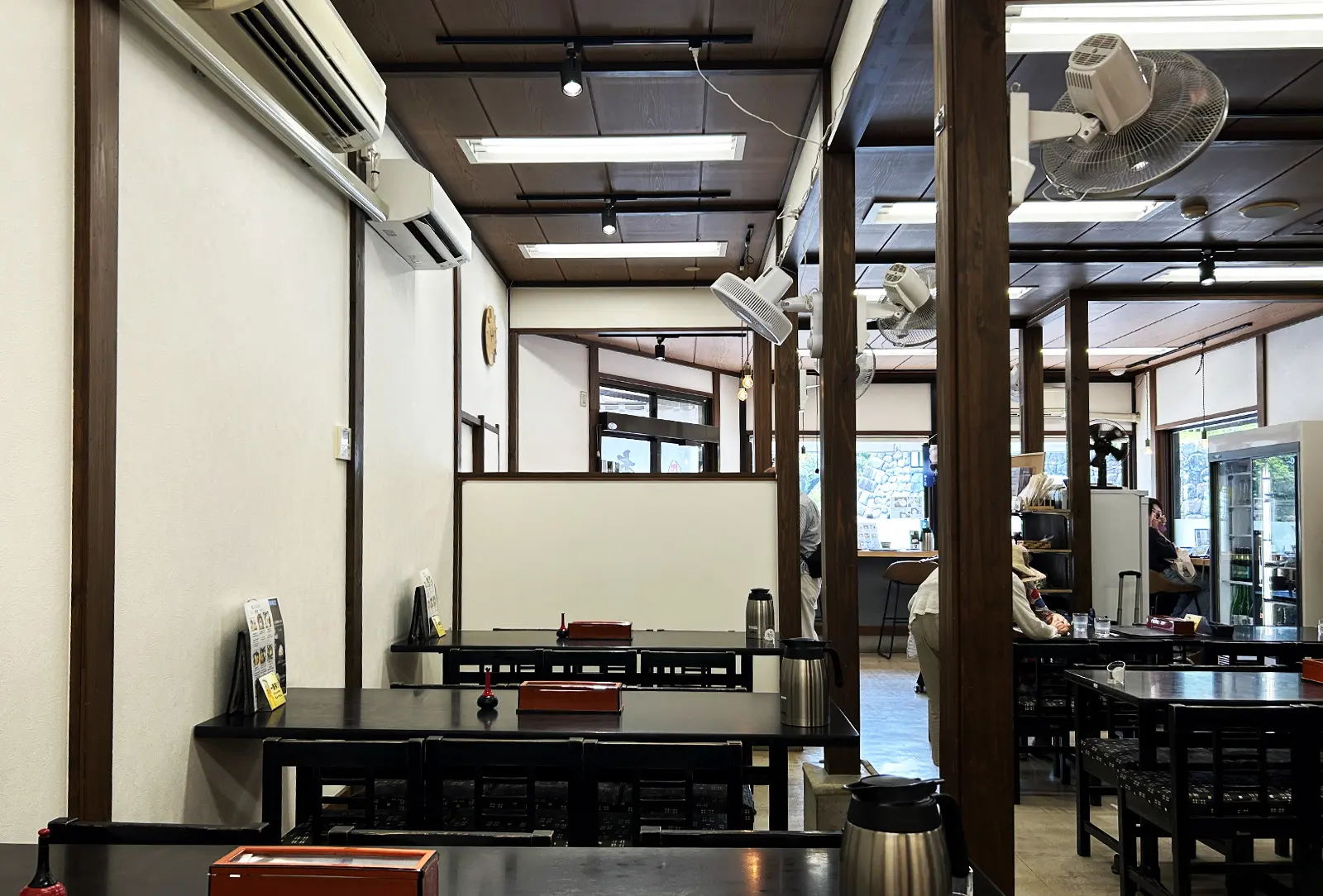
We went with cream soda.
By the way, the ninja outfit my son is wearing was bought at the NINJA Museum for 2,000 yen.

Inside the Tenshukaku!
Finally, it was time to enter the main keep!
Admission: Adults 510 yen, Elementary/Junior High students 200 yen, kids under school age are free.
There’s also a combo ticket with the SAMURAI Museum that saves a bit.
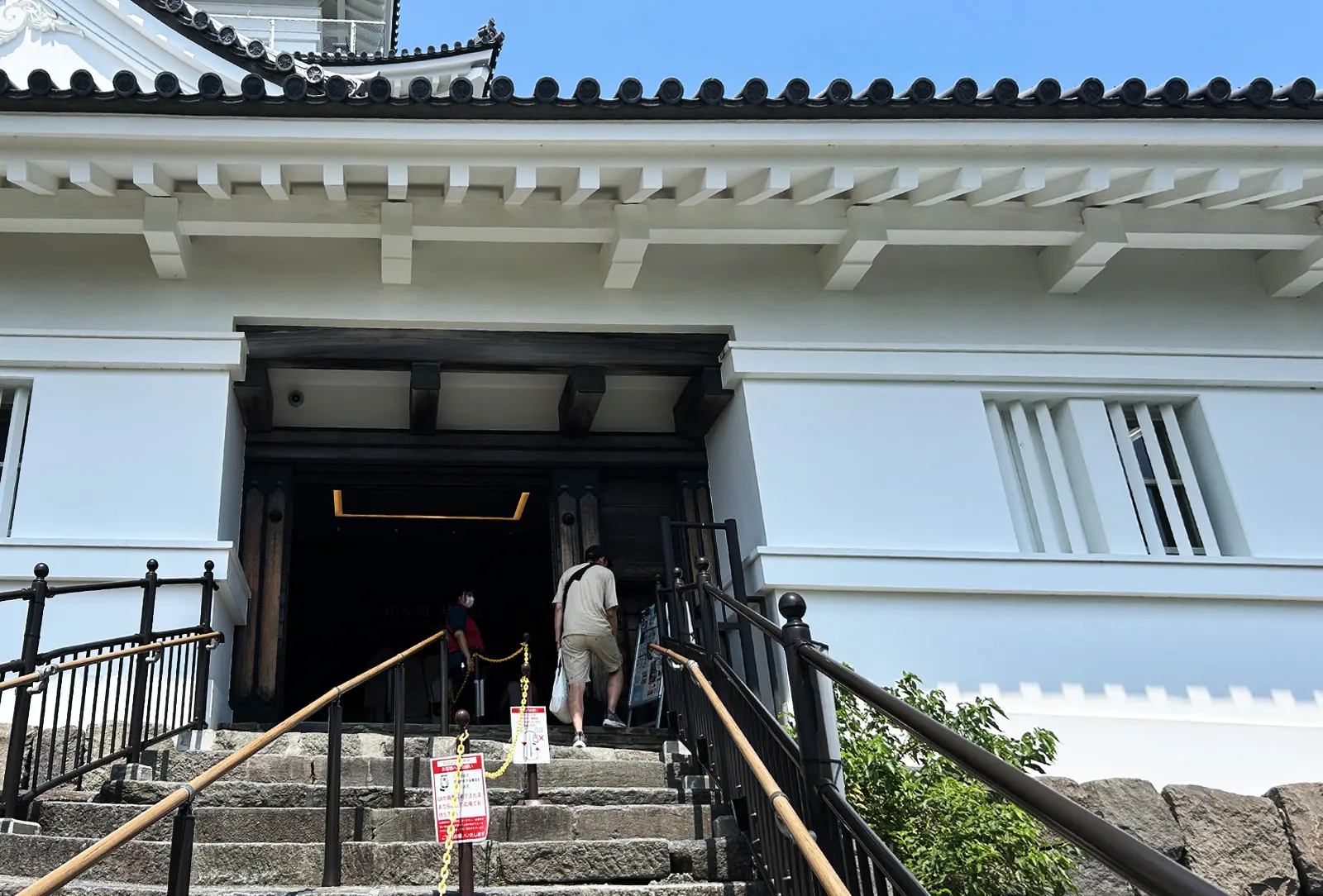
The first thing inside: a ranking of Japan’s tallest castles. Osaka Castle tops the list—huge!
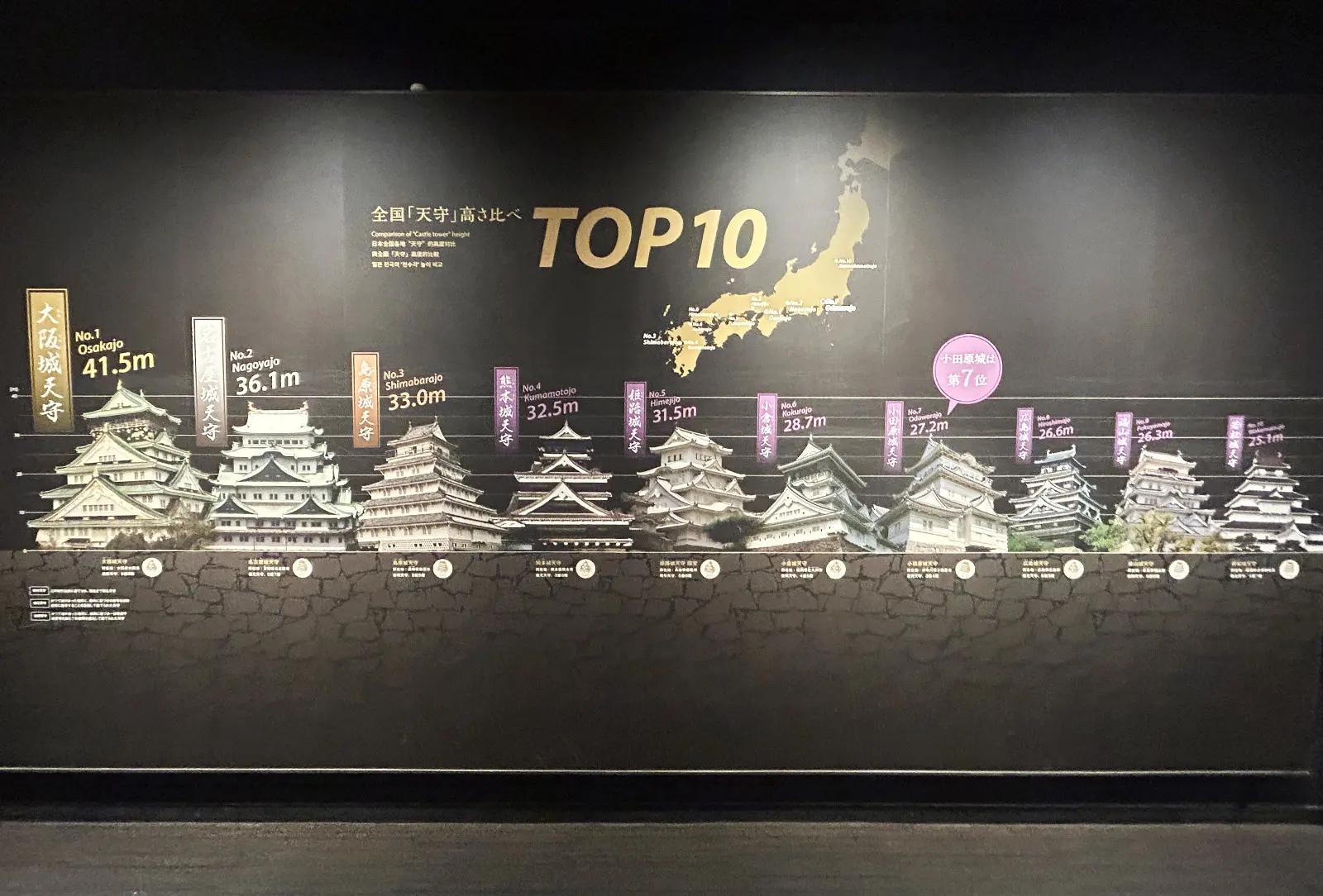
And what about our Odawara Castle?
It stands 27.2m tall, ranking 7th. A… somewhat middle spot (lol).
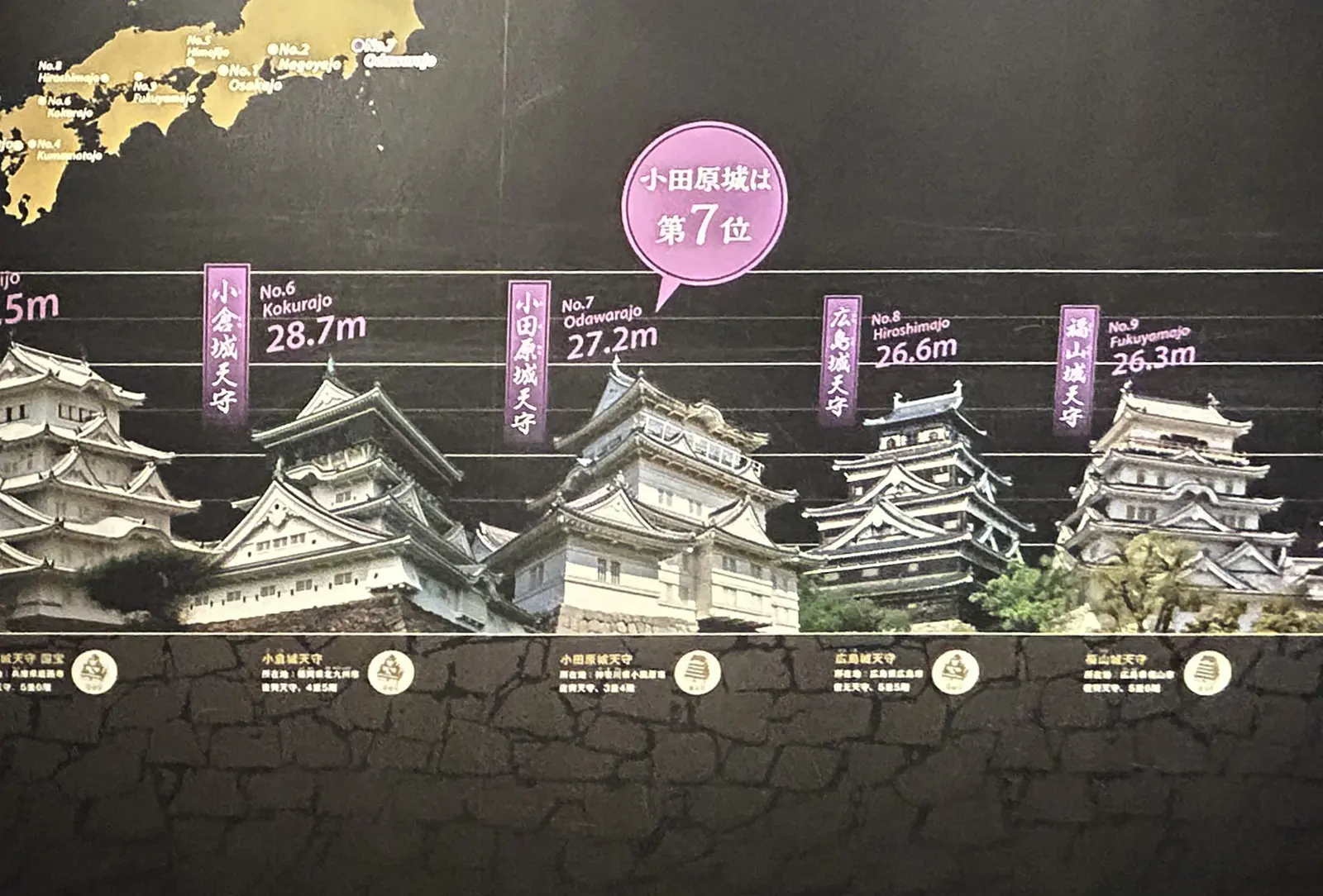
Odawara Castle Two-Story Yagura Shachigawara
Next, we came across the giant roof ornaments—shachihoko!
Up close, they’re massive. Way bigger than expected.
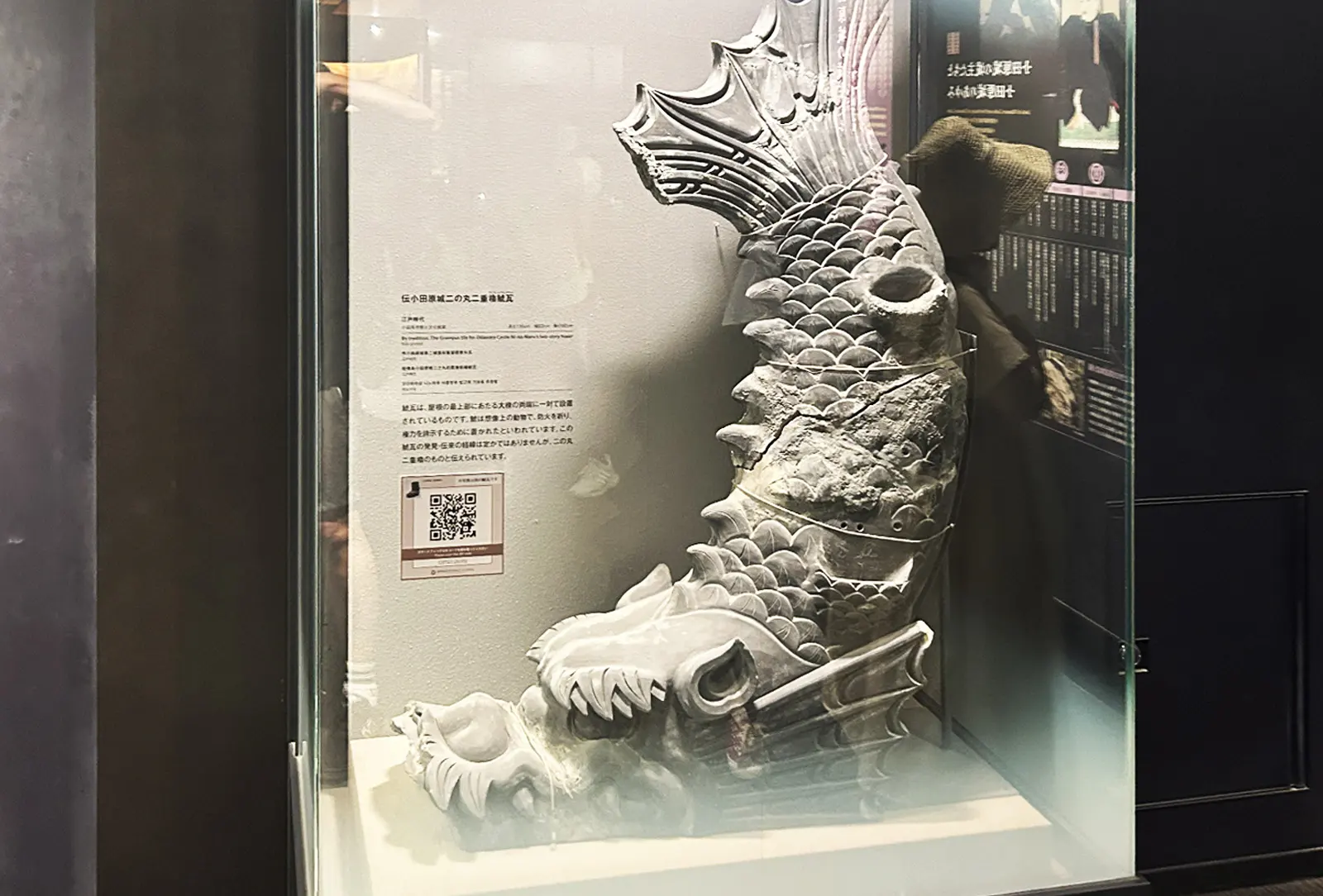

Mitsuba Aoi Crest Roof Tiles
Here’s a roof tile marked with the Tokugawa shogunate’s crest, the Mitsuba Aoi.
Honestly, I’d love one of these as a front-door ornament.
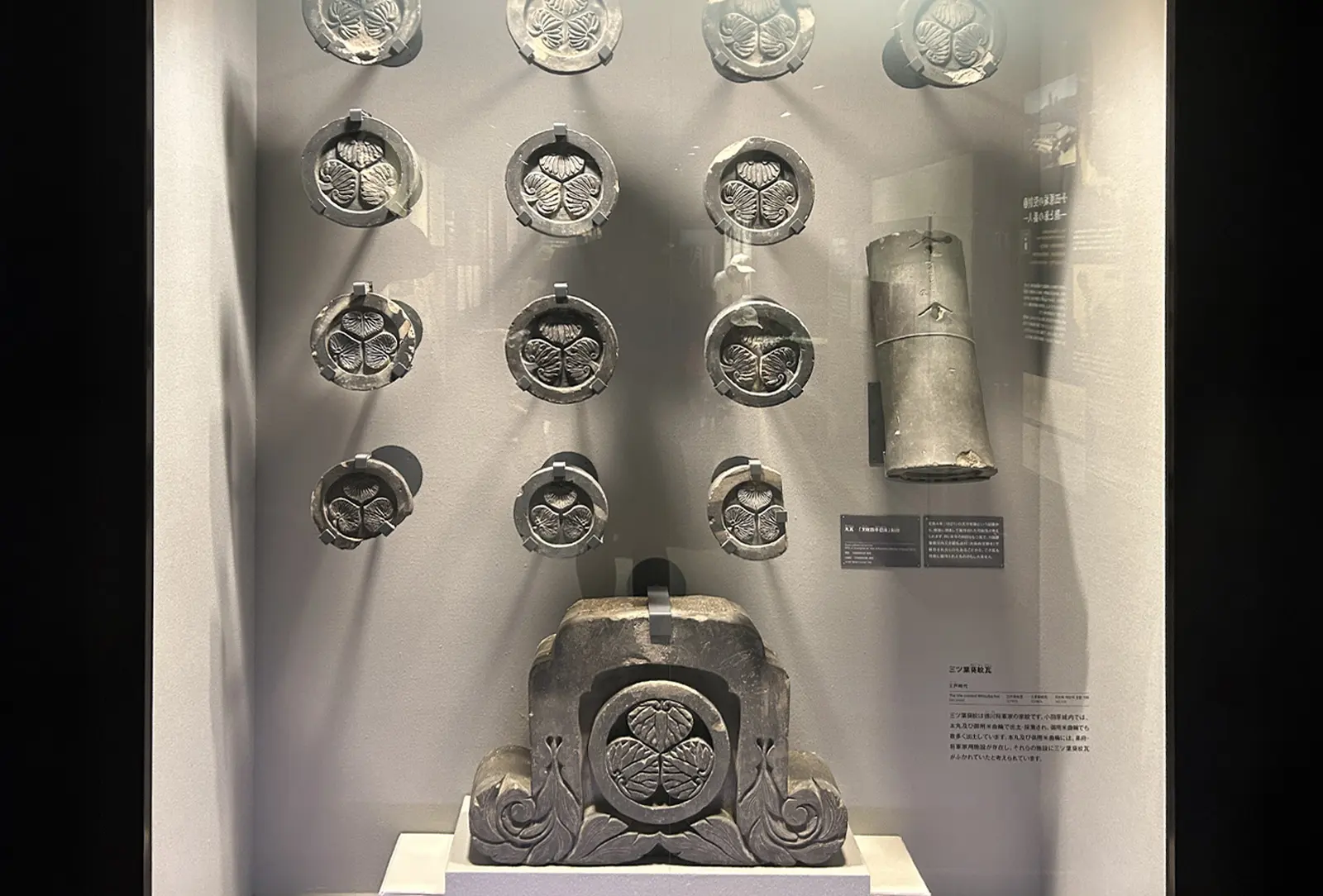
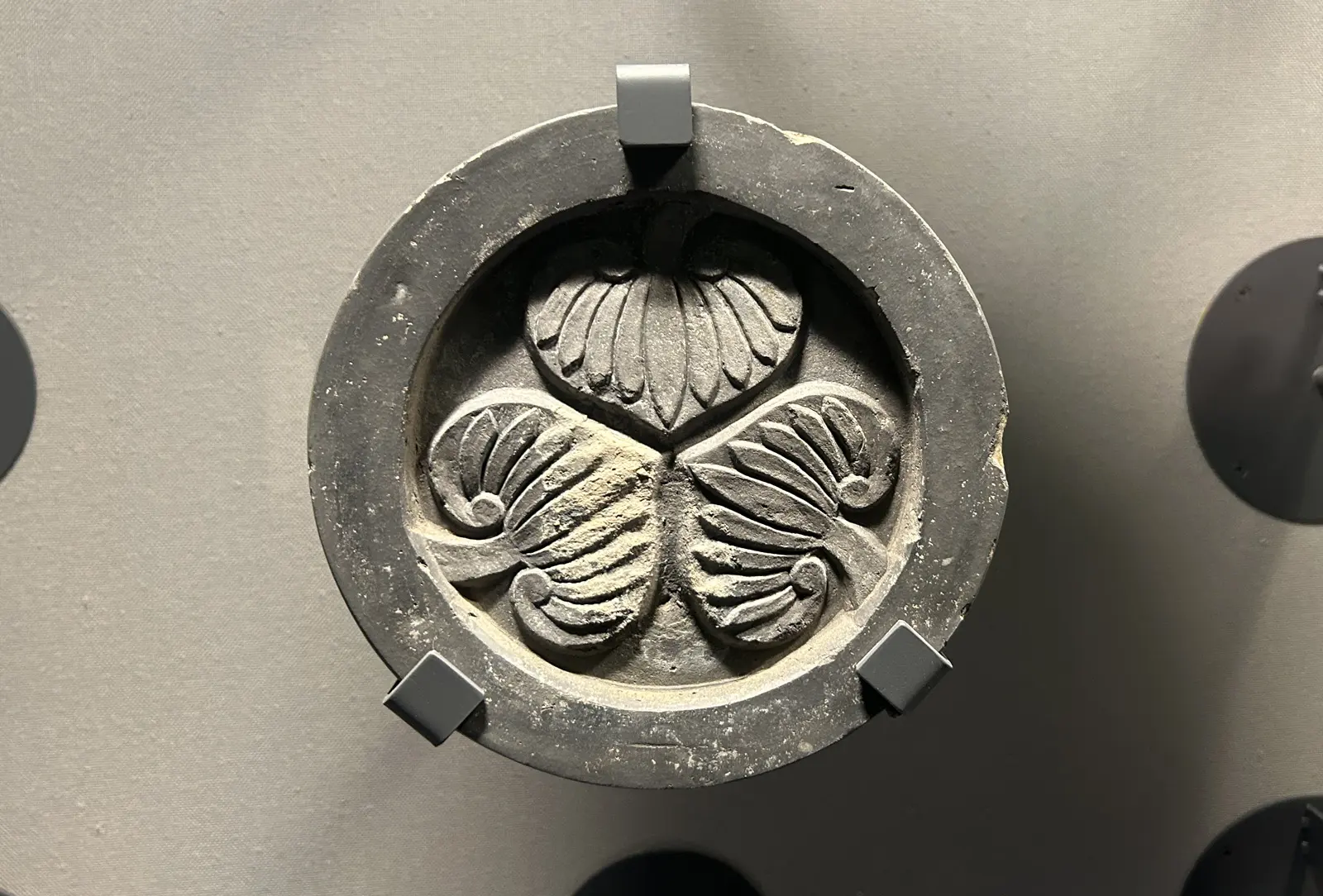
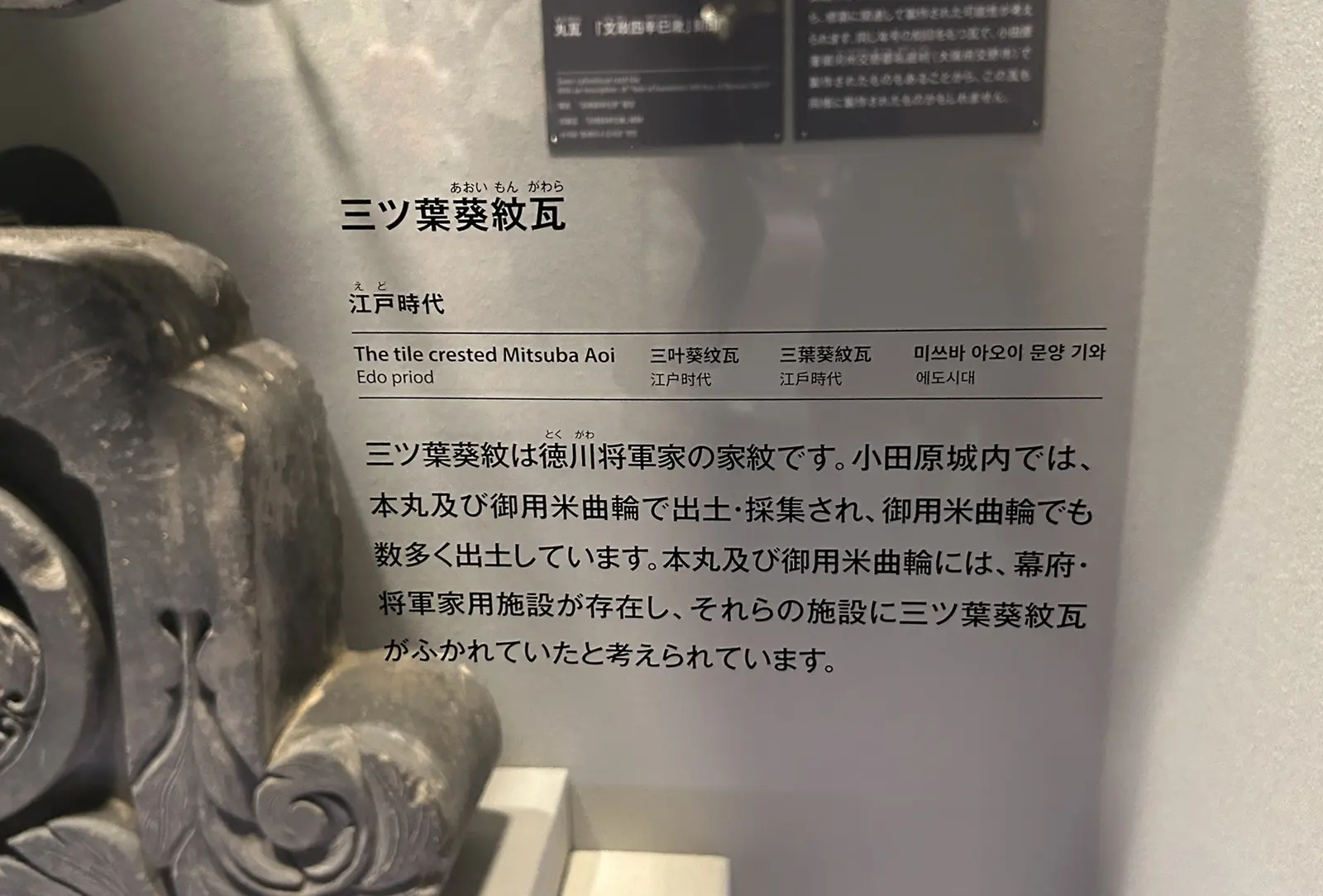
Inrō-Shaped Signboard
Then appeared… a gigantic inrō (medicine case)?
At first, I thought it was just like the one from Mito Kōmon, but turns out it’s actually a signboard shaped like an inrō.
The inscription reads “Uirō”—a type of folk medicine produced by the Uirō family in Odawara.
Apparently, Mito Kōmon was just flashing around what was basically a medicine case to intimidate people!

For those unfamiliar with Mito Kōmon:
Mito Kōmon is a classic Japanese period drama about Tokugawa Mitsukuni (a real Edo-period daimyo), traveling around Japan with his retainers and punishing corrupt officials.
The iconic finale always ends with him pulling out the inrō and declaring, “Don’t you recognize this crest?!”—at which point all the villains bow down.
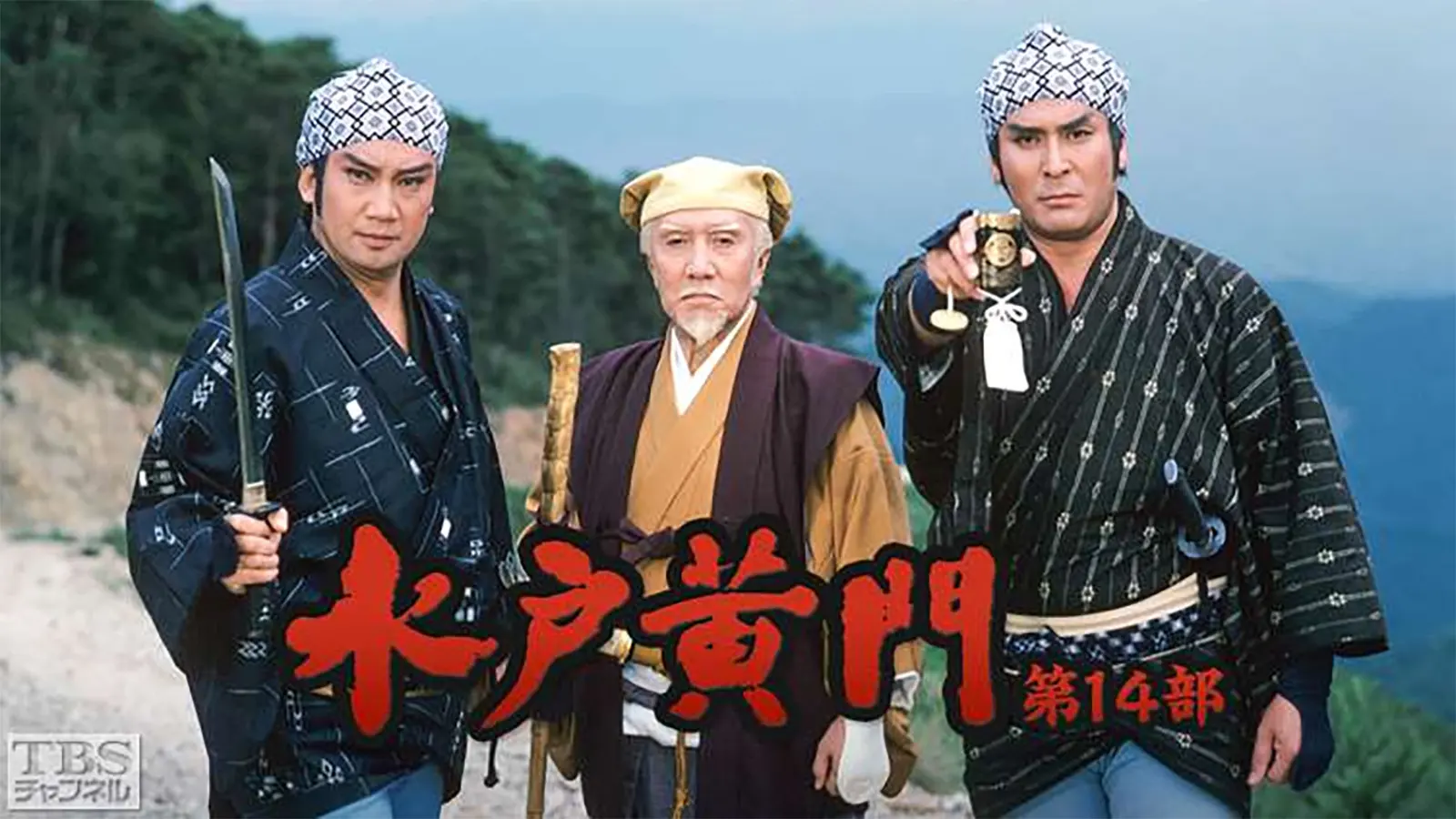
3rd Floor Exhibition: Armor & Swords
Back to the castle itself.
On the 3rd floor is everyone’s favorite—armor and swords!
This floor displays items connected to the Hojo clan and Odawara domain.
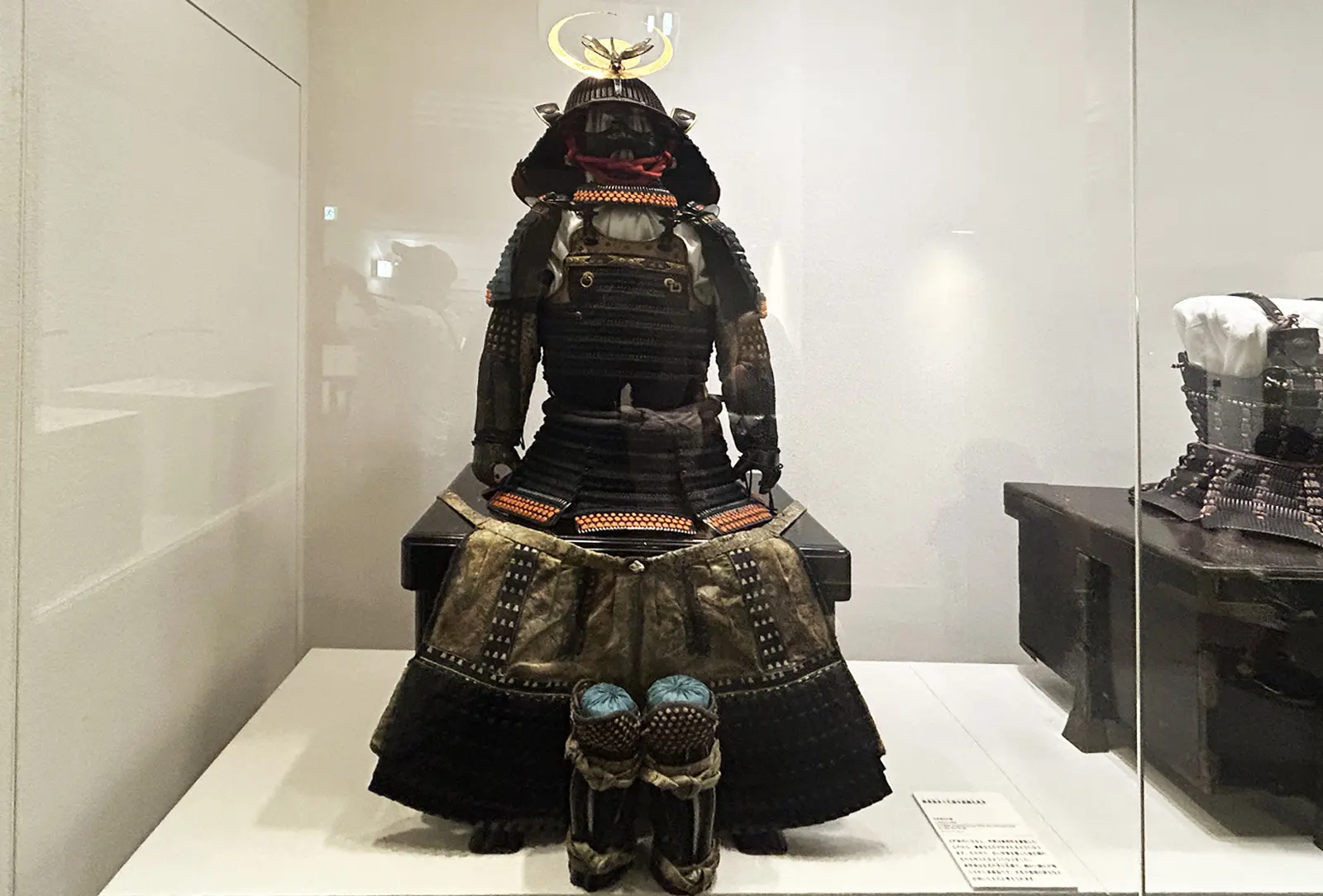
Check out this helmet with a dragonfly attached. Looks stylish, but actually it’s a lucky charm called kachimushi (“victory bug”).
Since dragonflies only fly forward and never retreat, they symbolized victory and progress—warriors loved using them as motifs.
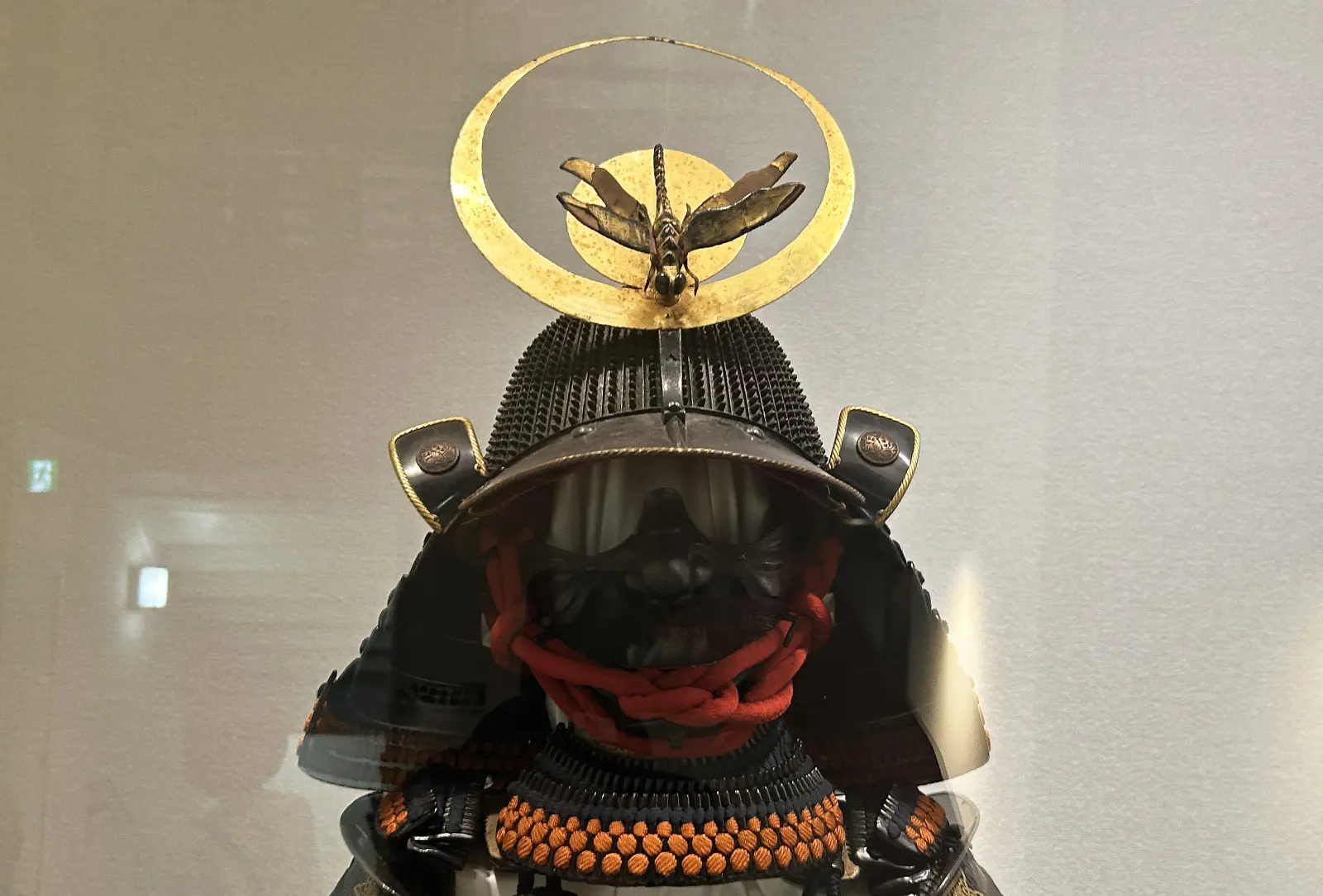
Legendary Swords
Katana “Ashū Yasuyoshi Saku”
Made by Yasuyoshi, a swordsmith from Tokushima.
Dated to the early 1500s (Eisho–Daiei period), this blade saw action during the Sengoku era. Incredible craftsmanship.
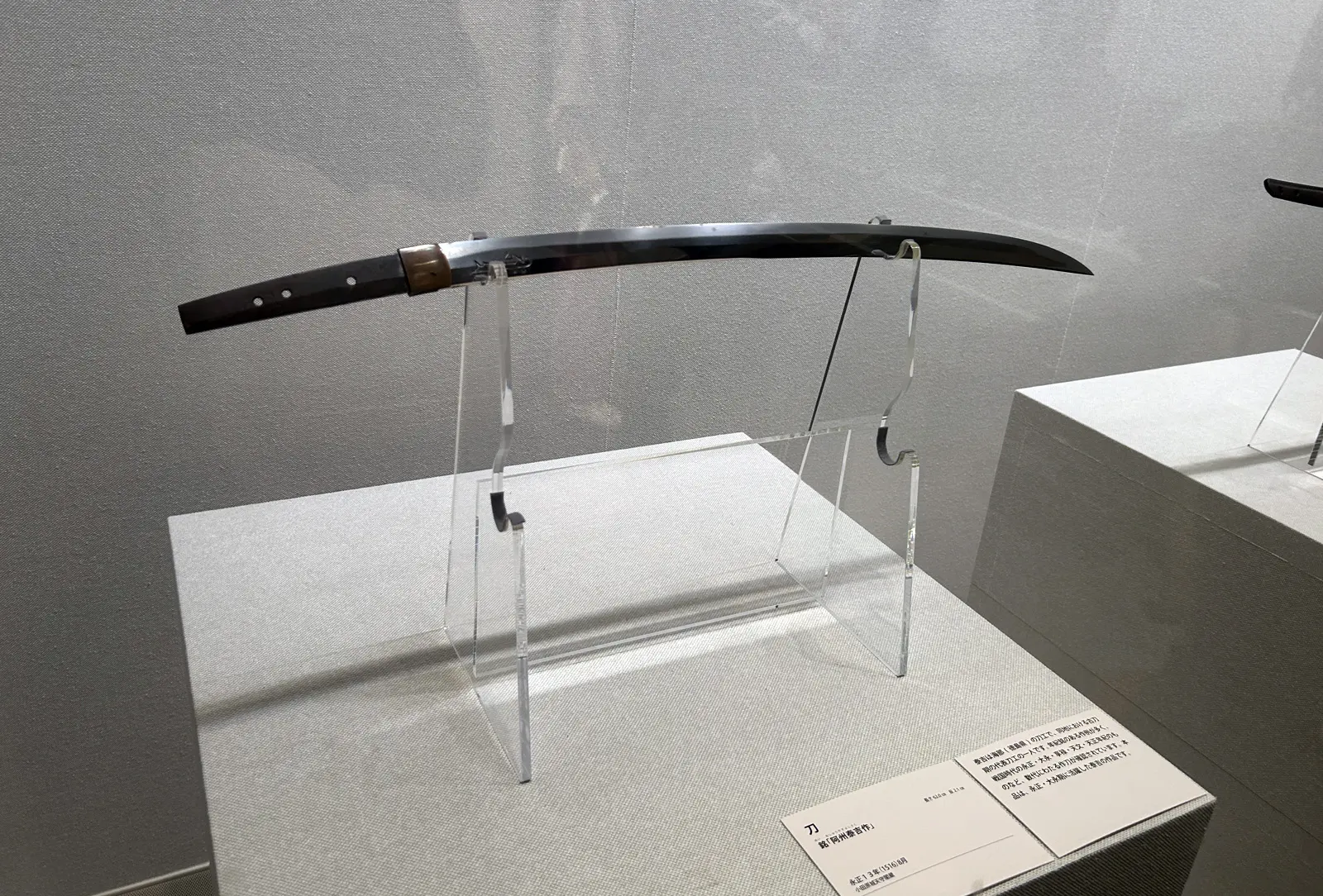
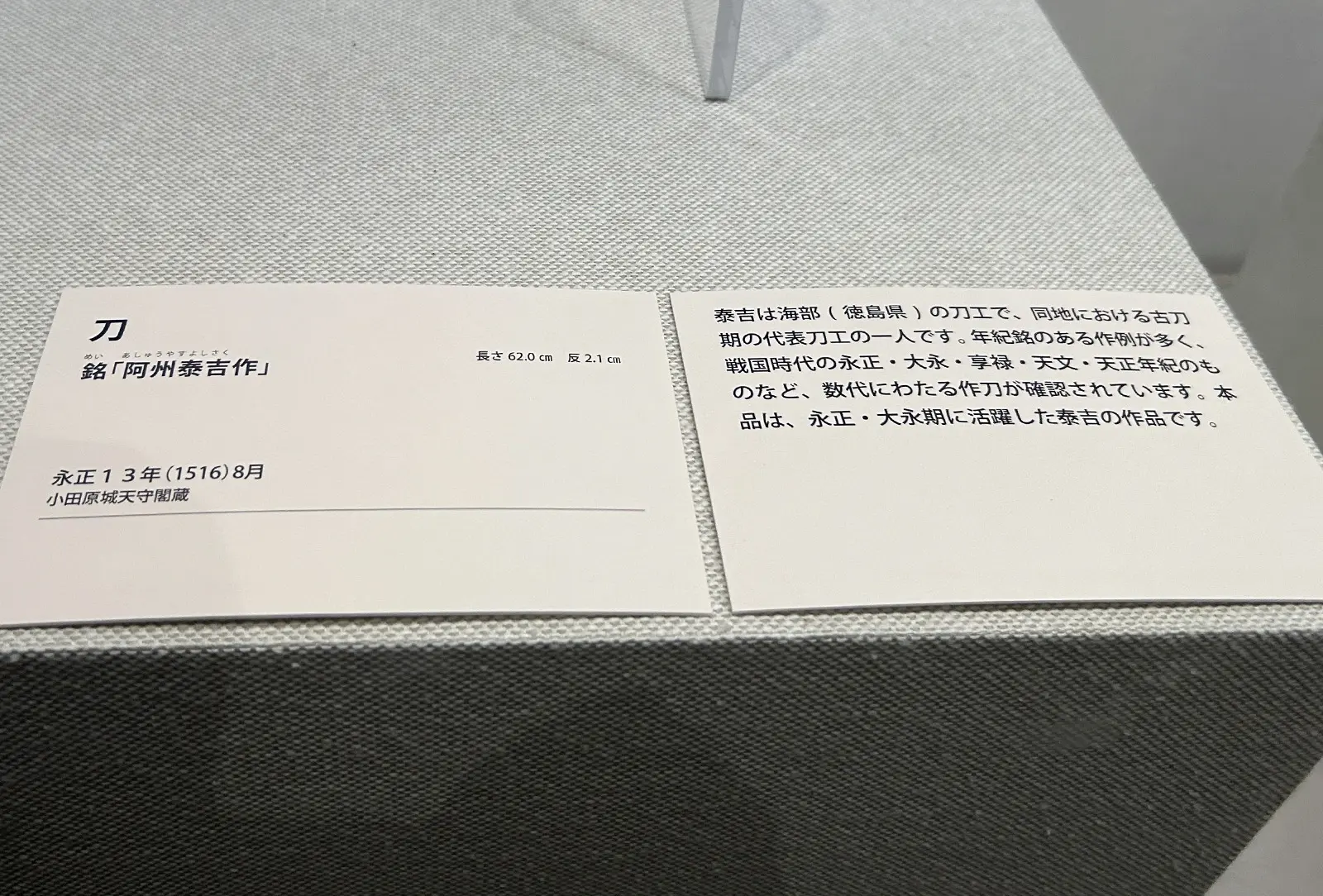
Tachi “Tsunetsugu”
Forged in the mid-Kamakura period by Tsunetsugu of the Aoe school.
Despite slight shortening, it’s in remarkable condition and considered one of the finest in the collection.
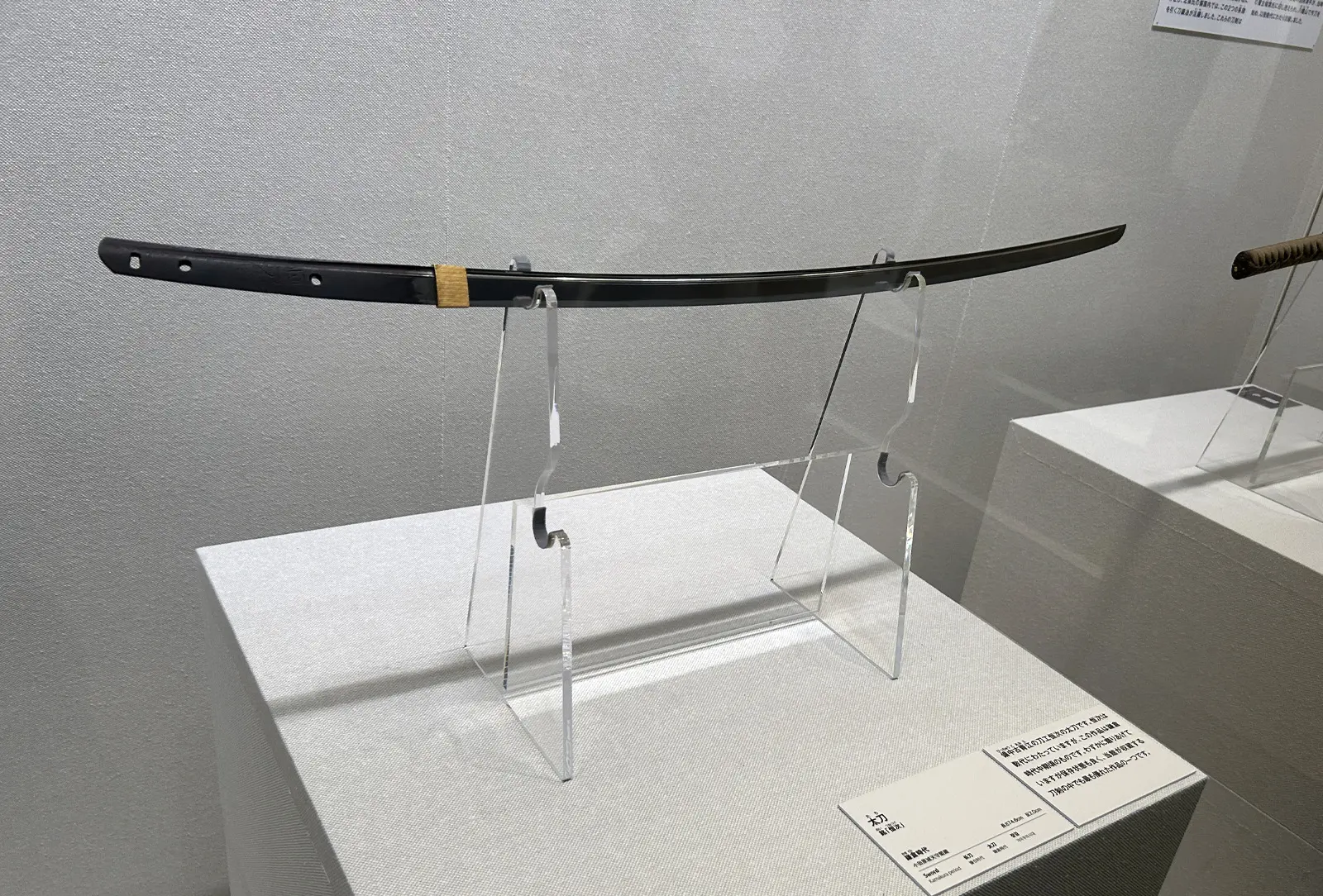
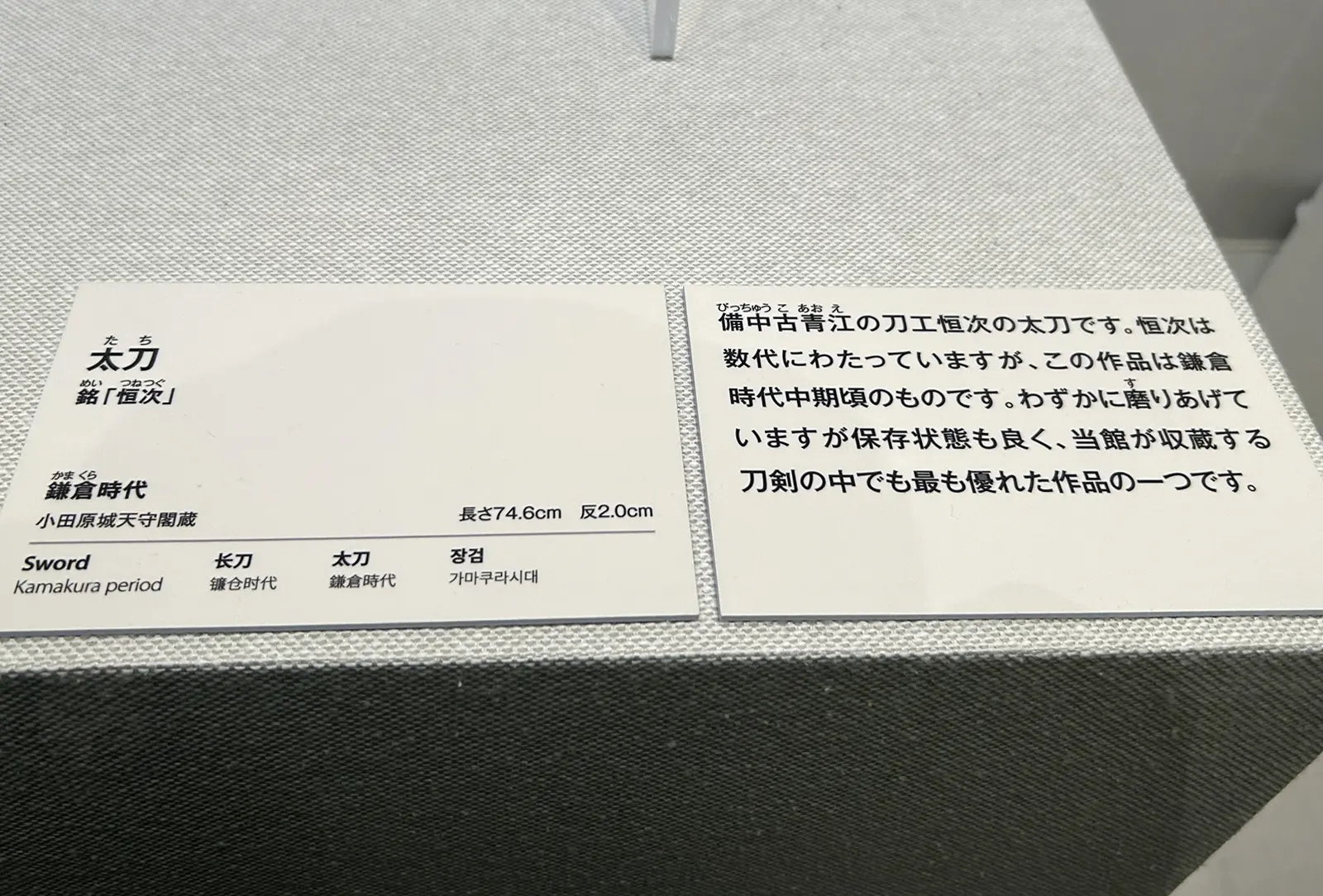
Kuro-Urushi Nuri Okubo-Fuji Maki-e Raden Uchigatana Koshirae
Finally, a mouthful of a name—this ornate sword mount belonged to the Okubo clan of Odawara.
Black lacquer, golden family crests lined in perfect order, and mother-of-pearl inlay in between.
Though aged, the contrast of black, gold, and raden shimmer is breathtaking.
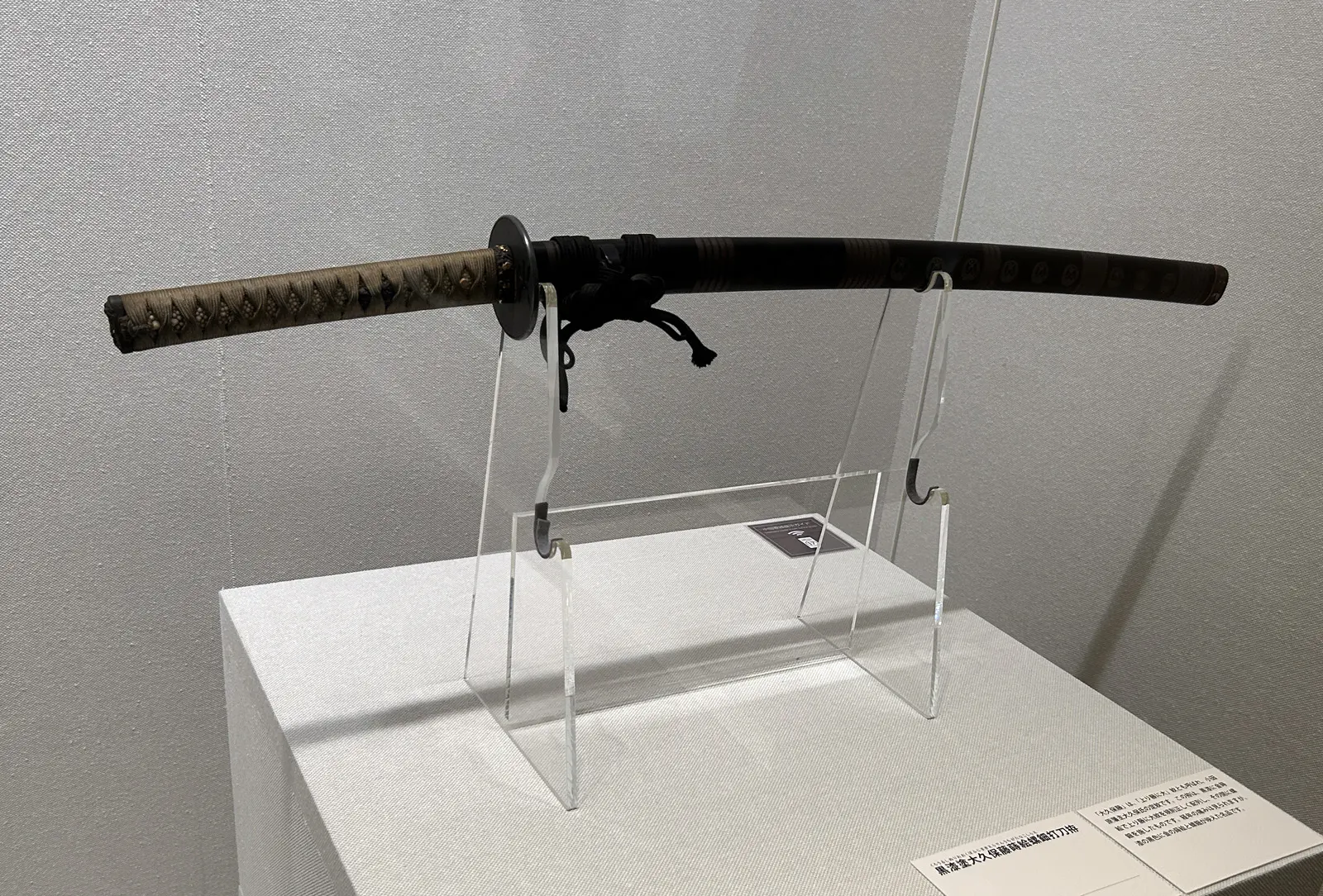

Of course, there were plenty more fascinating artifacts on display.
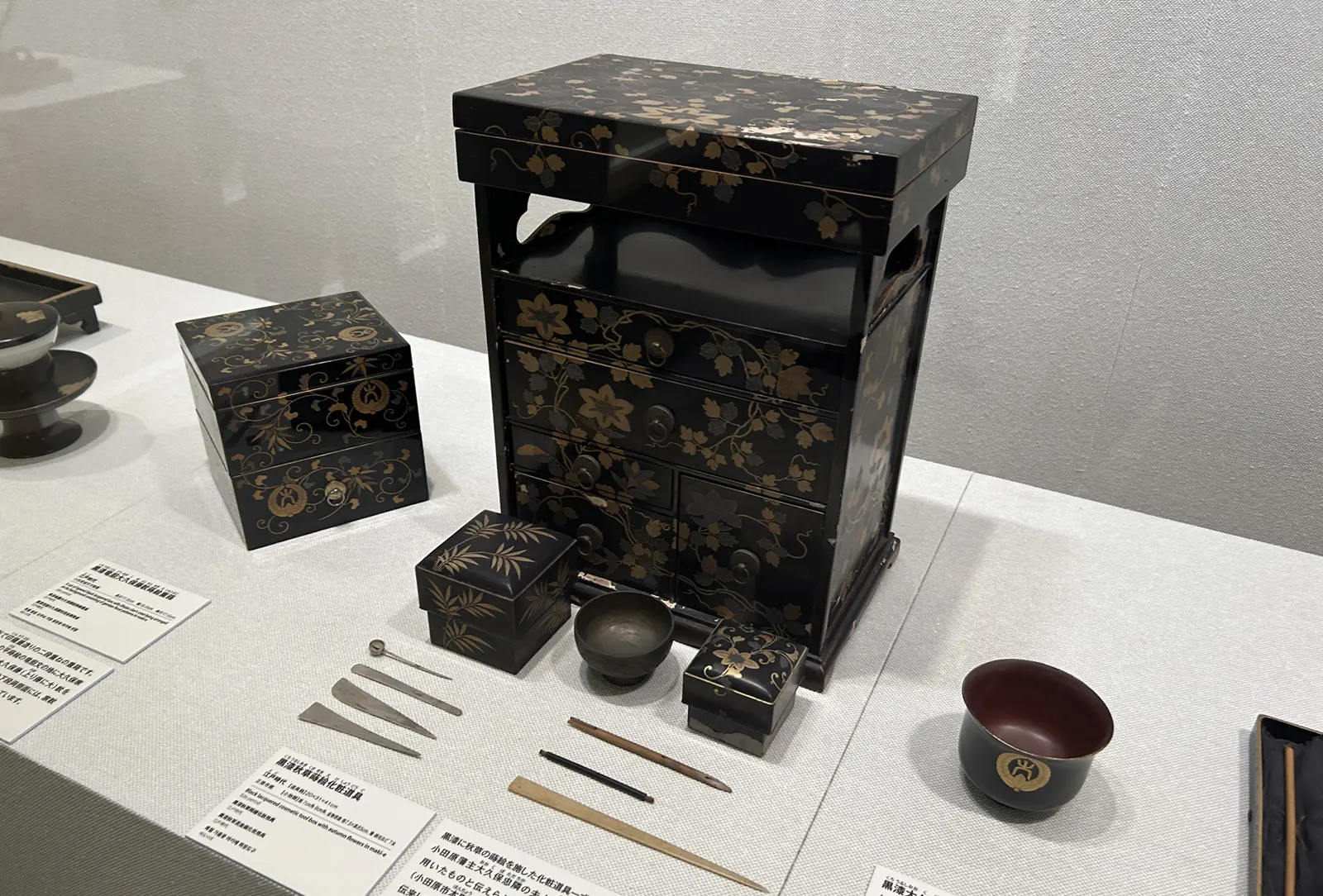
Ceramics Corner
My personal favorite was the ceramics section.
Some pieces had missing parts restored with modern techniques—the precision was stunning.
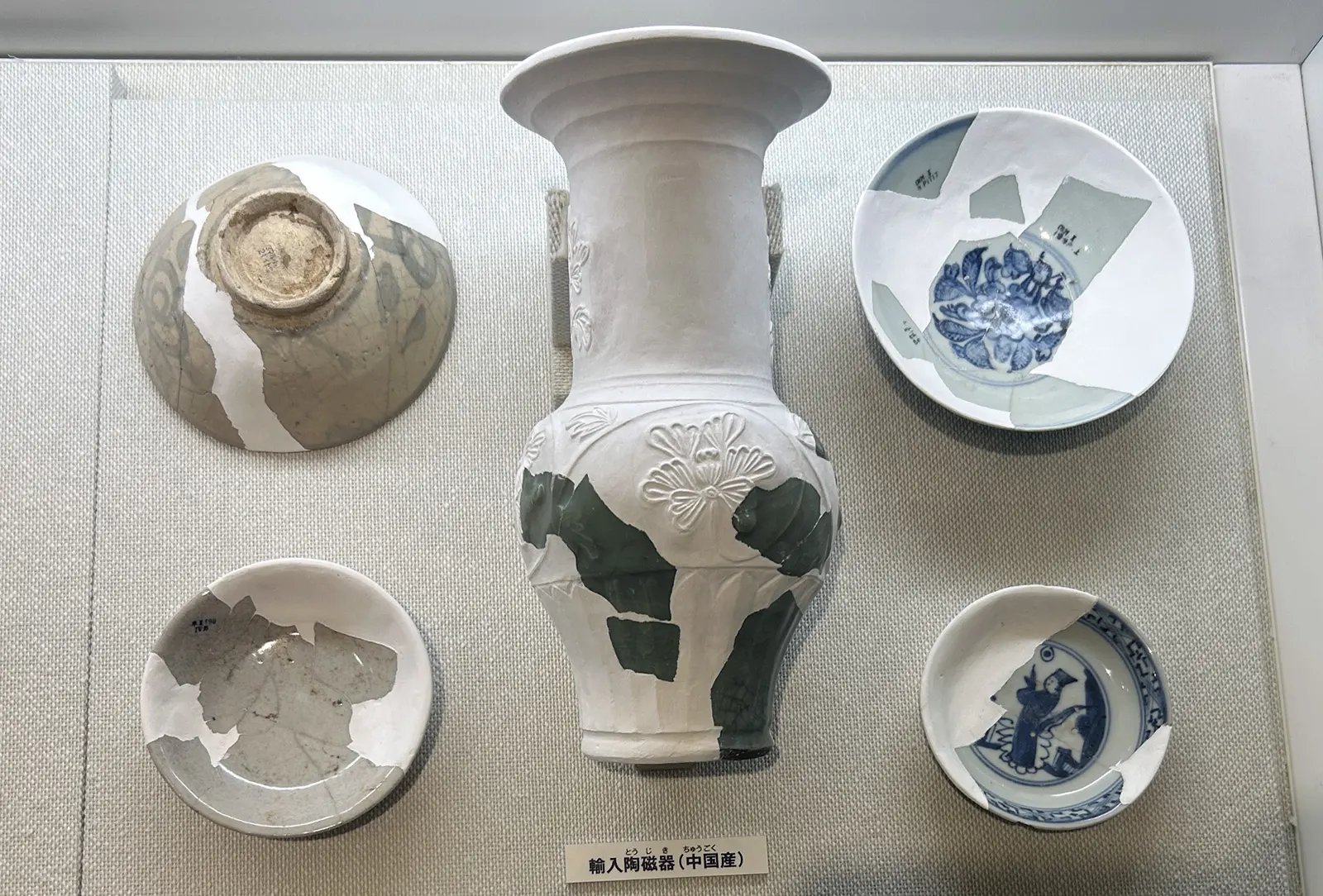
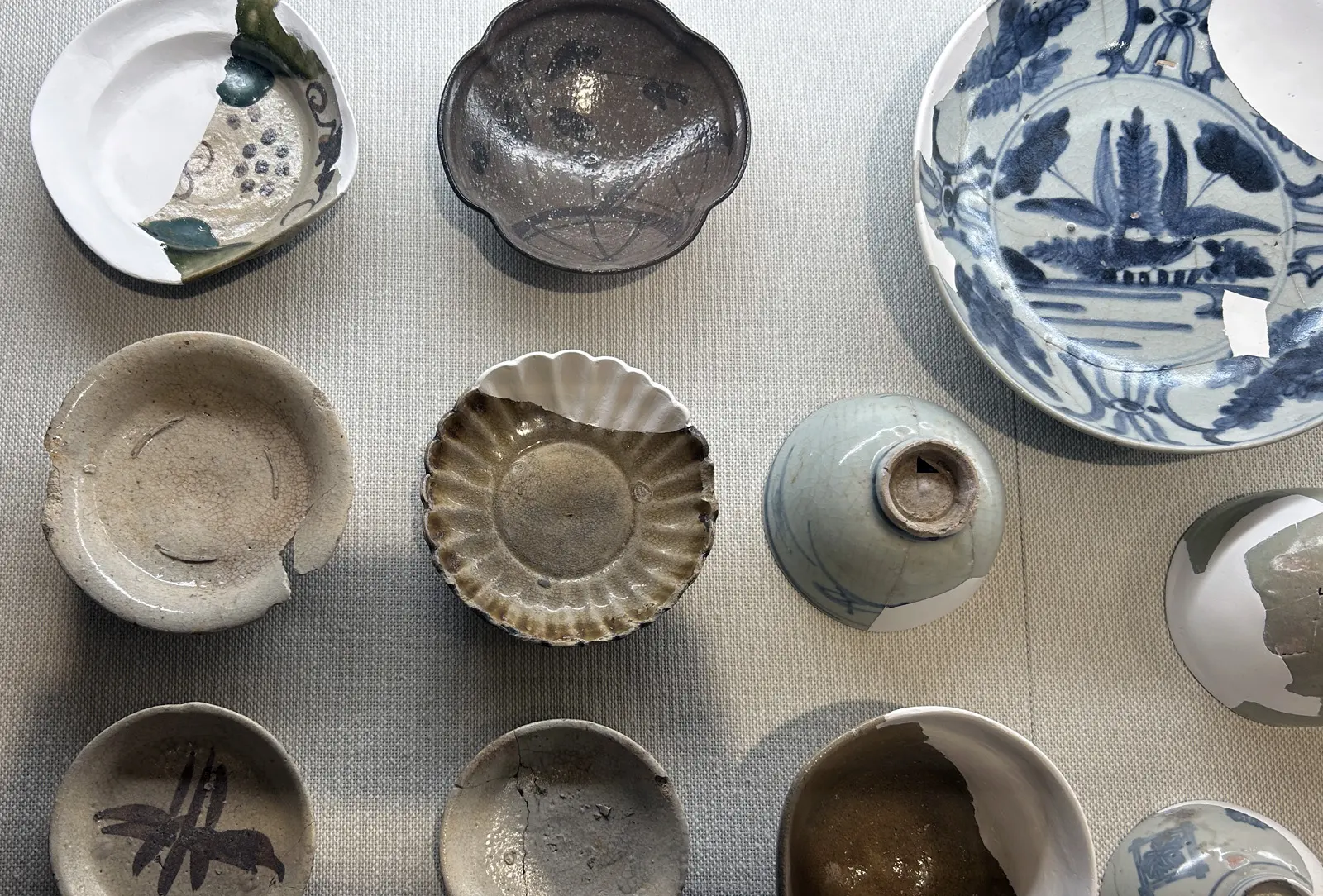
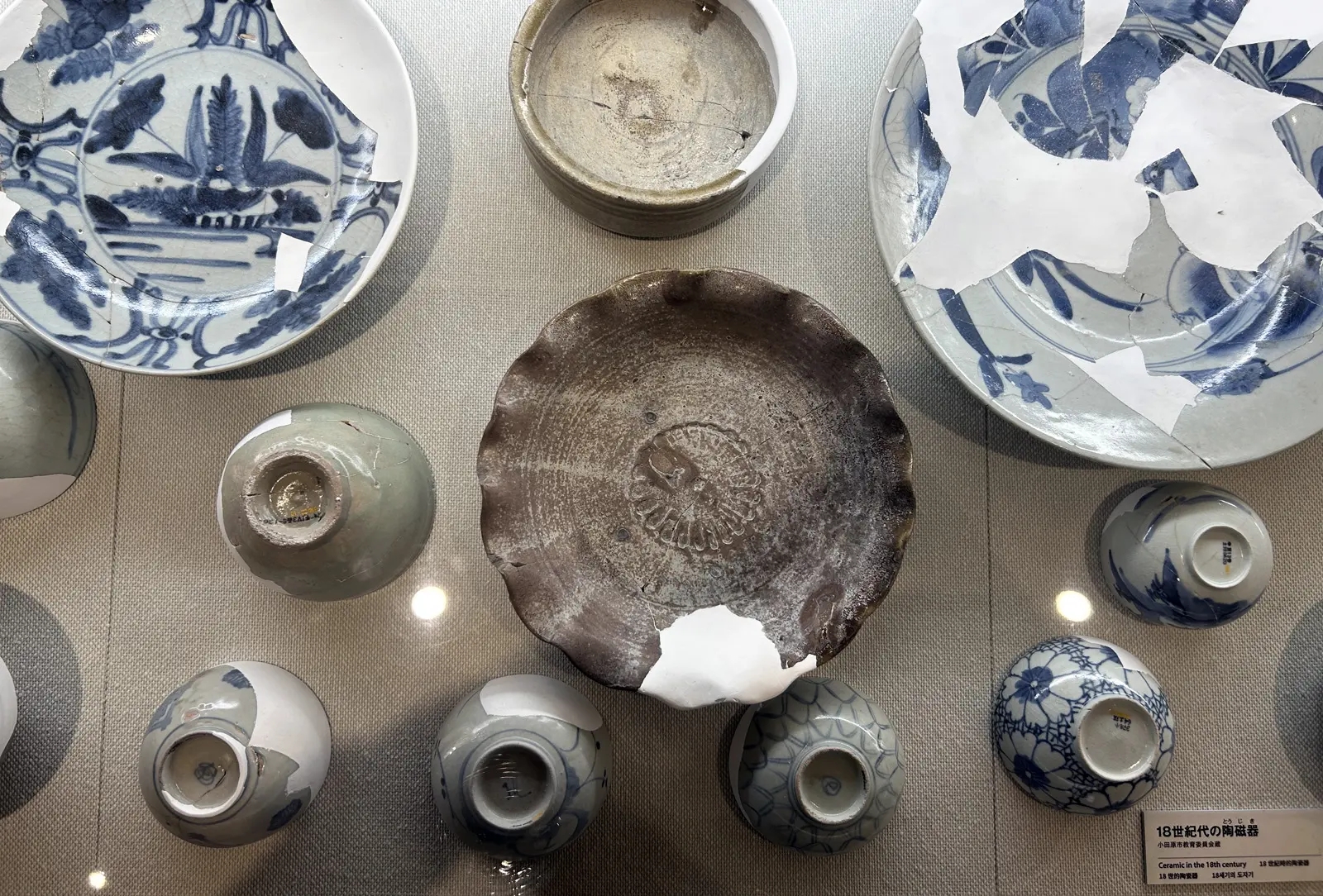
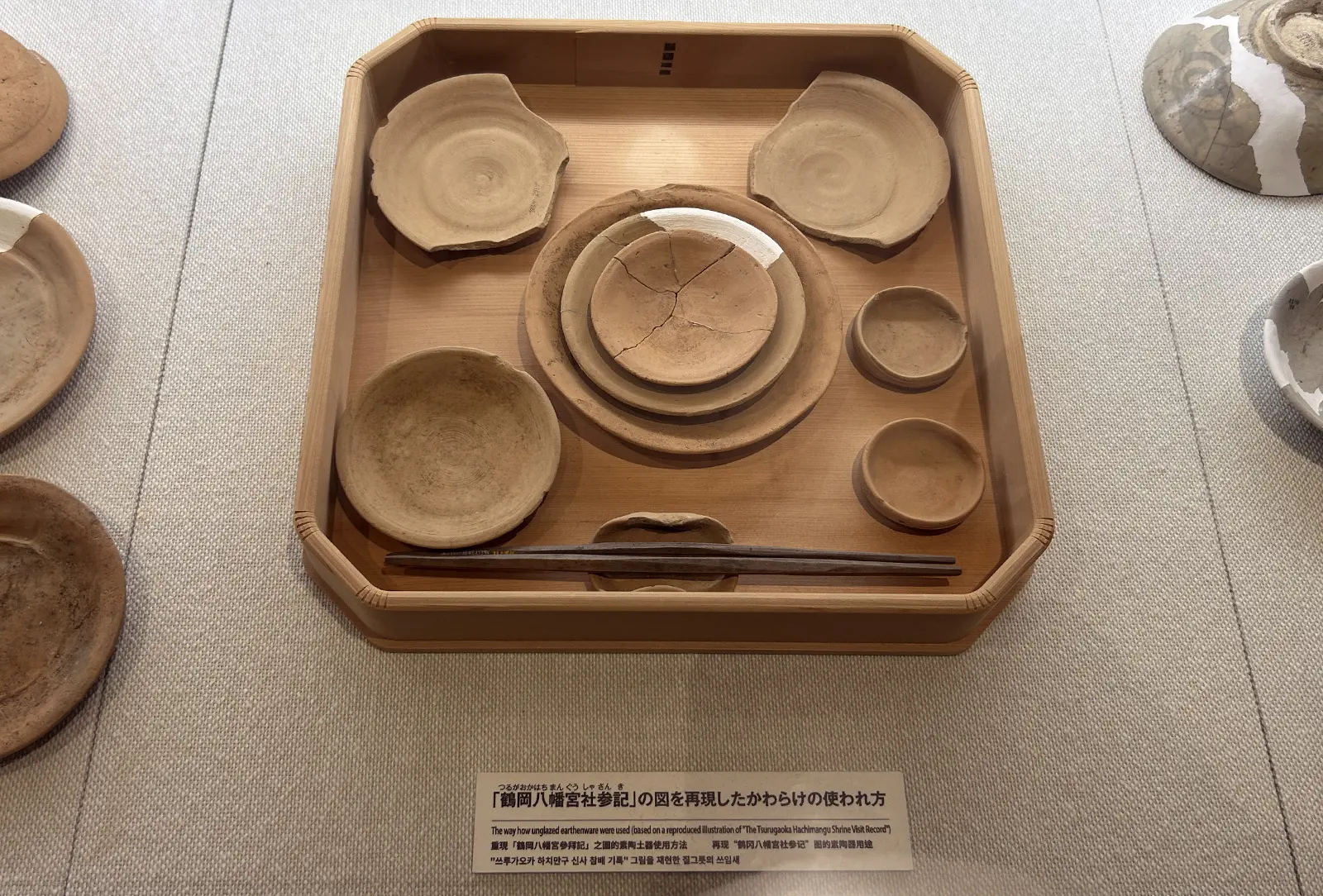
Here we also learned about Edo-period recycling techniques called Yaketsugi:
Yaketsugi used powdered lead glass called shiratamako, melted with heat to repair broken ceramics. It spread widely in the late Edo period. Many repaired pieces have markings with place names and owner names, and a large number have been excavated in Odawara.
─Excerpt from Odawara exhibition guide
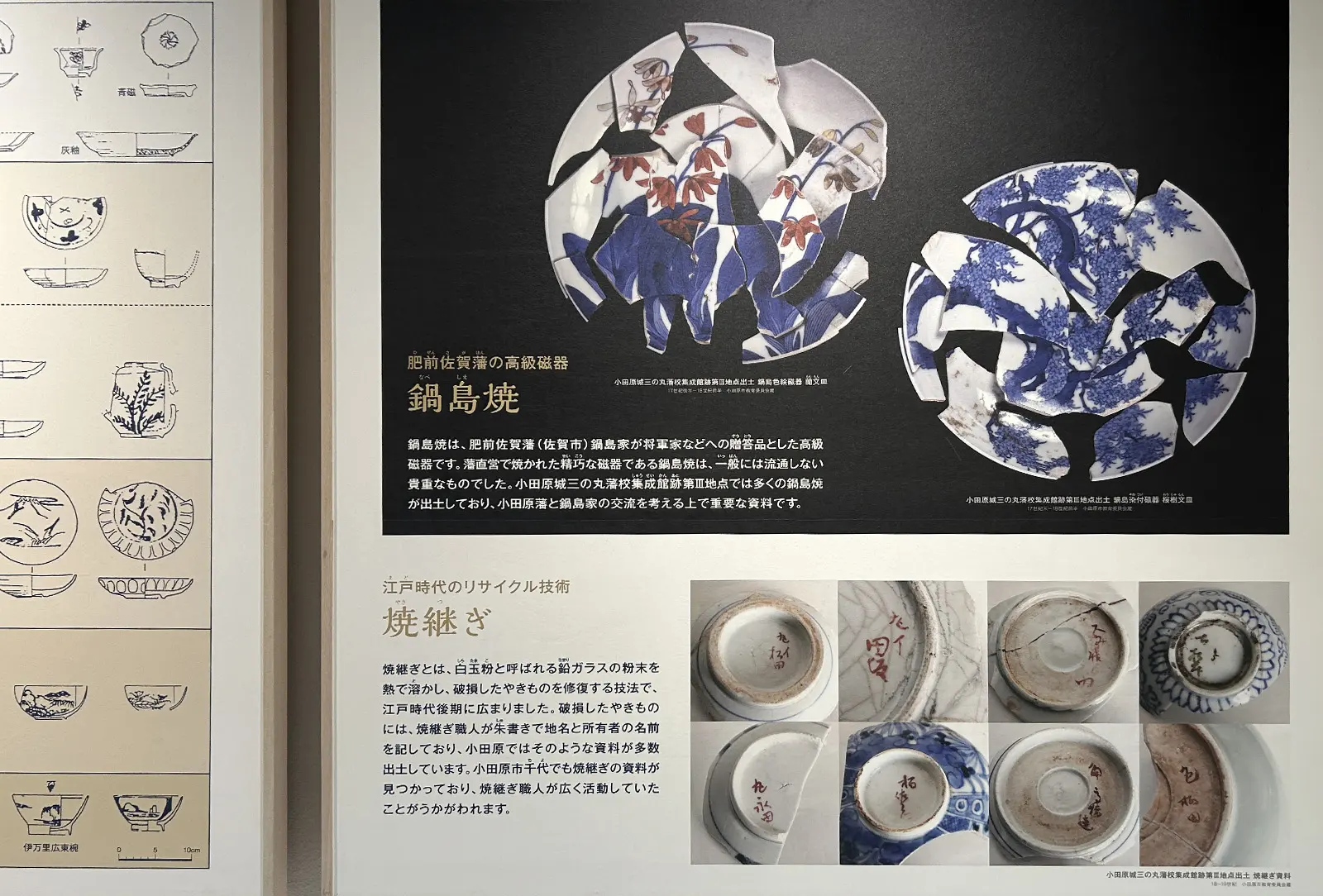
Turns out, many ceramic pieces and roof tiles have been unearthed around Odawara Castle and its town.
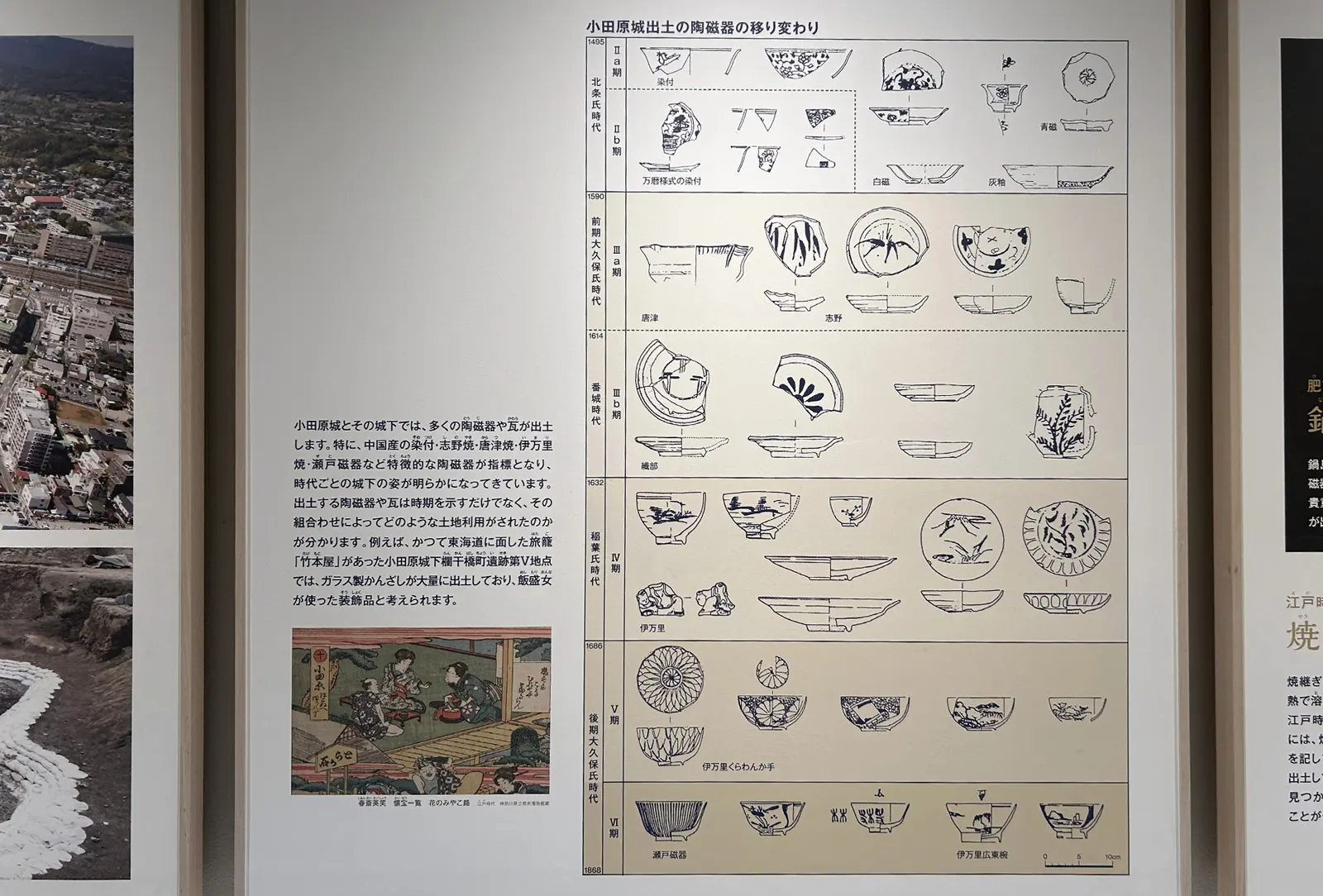
Tenshukaku Observation Deck
After enjoying the exhibits, it was time to head up to the very top:
the observation deck of Odawara Castle!
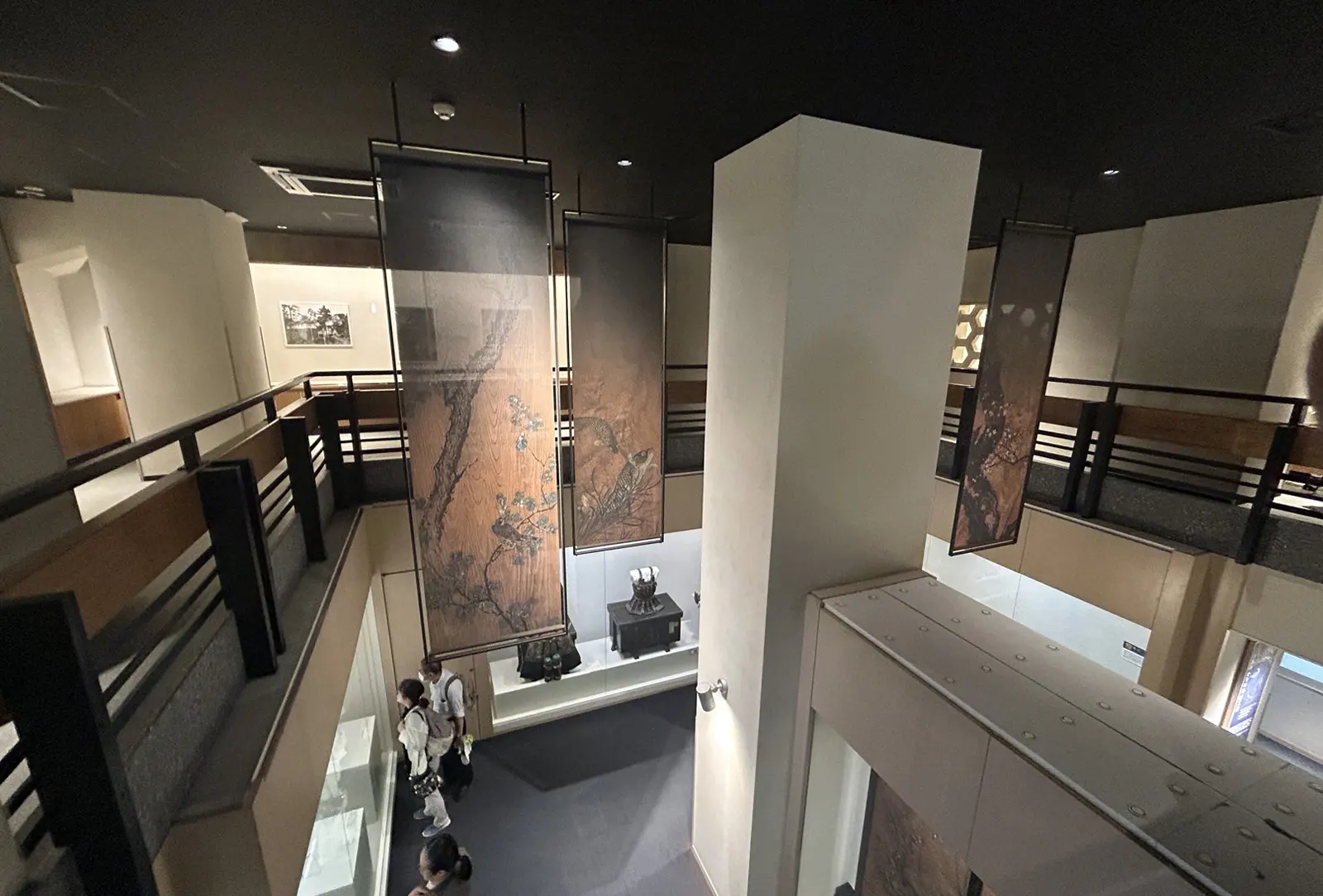
There’s even a detailed model of Odawara Castle displayed.

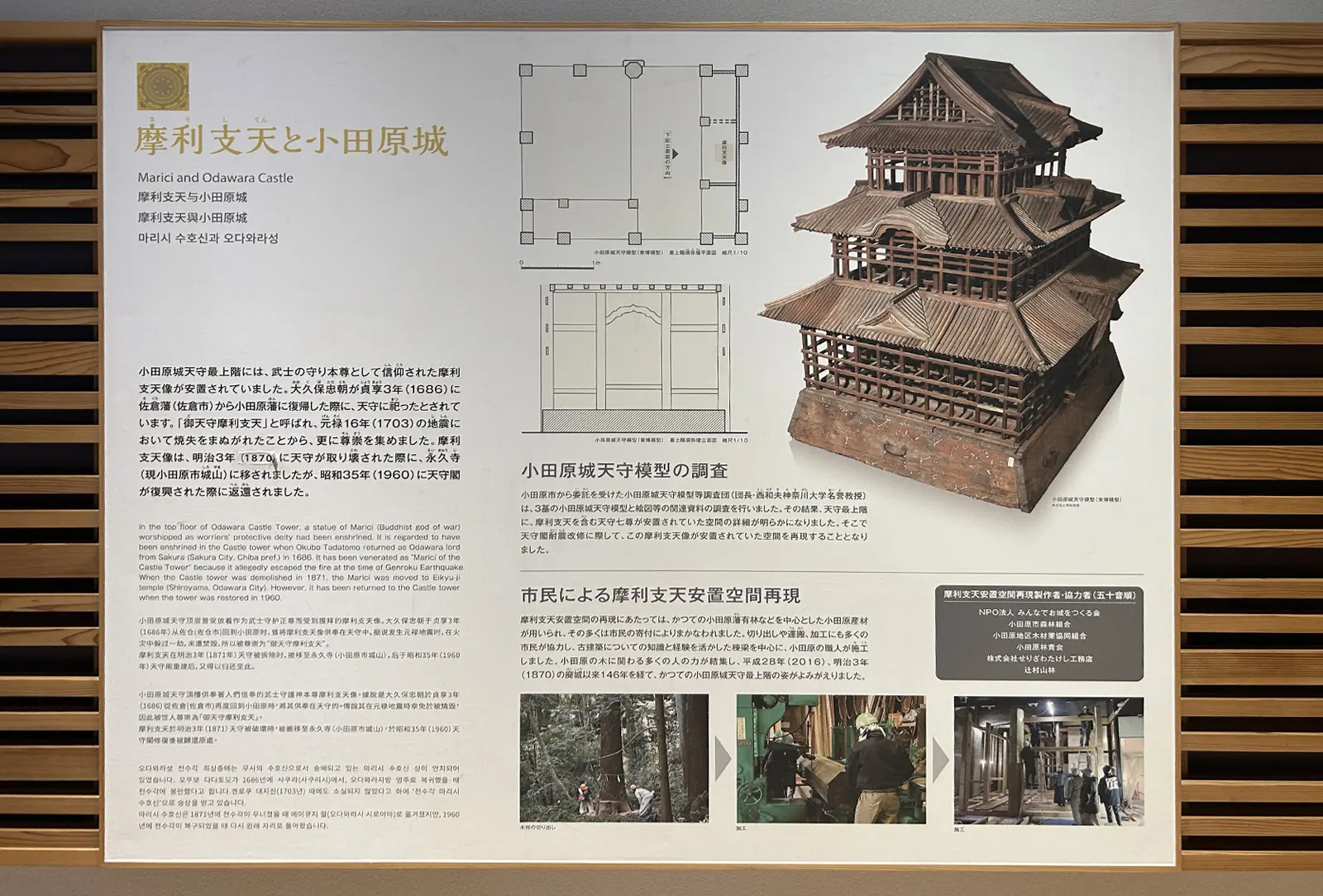
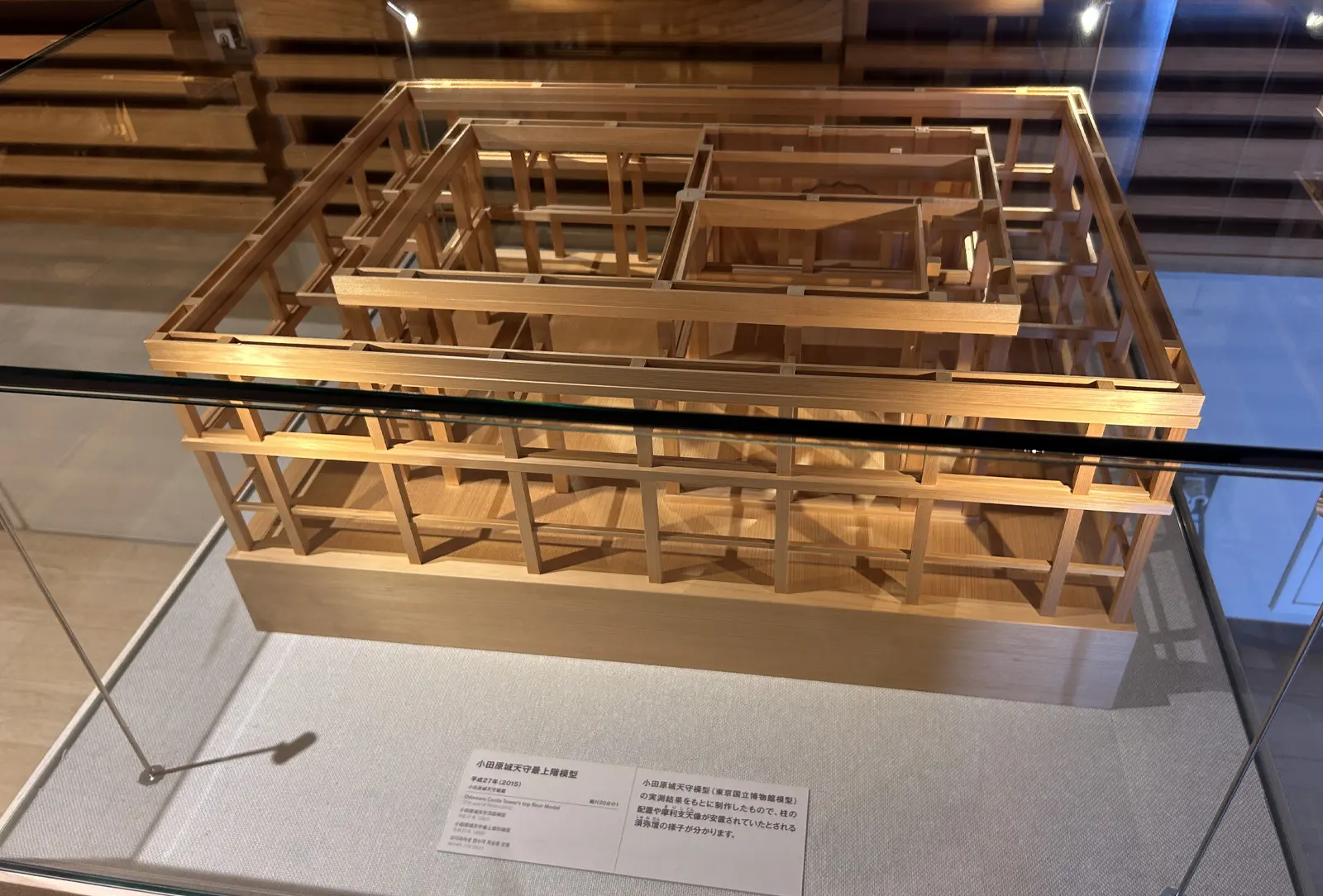
From here, the exit leads to the deck itself—note that everyone must move in a counterclockwise direction.
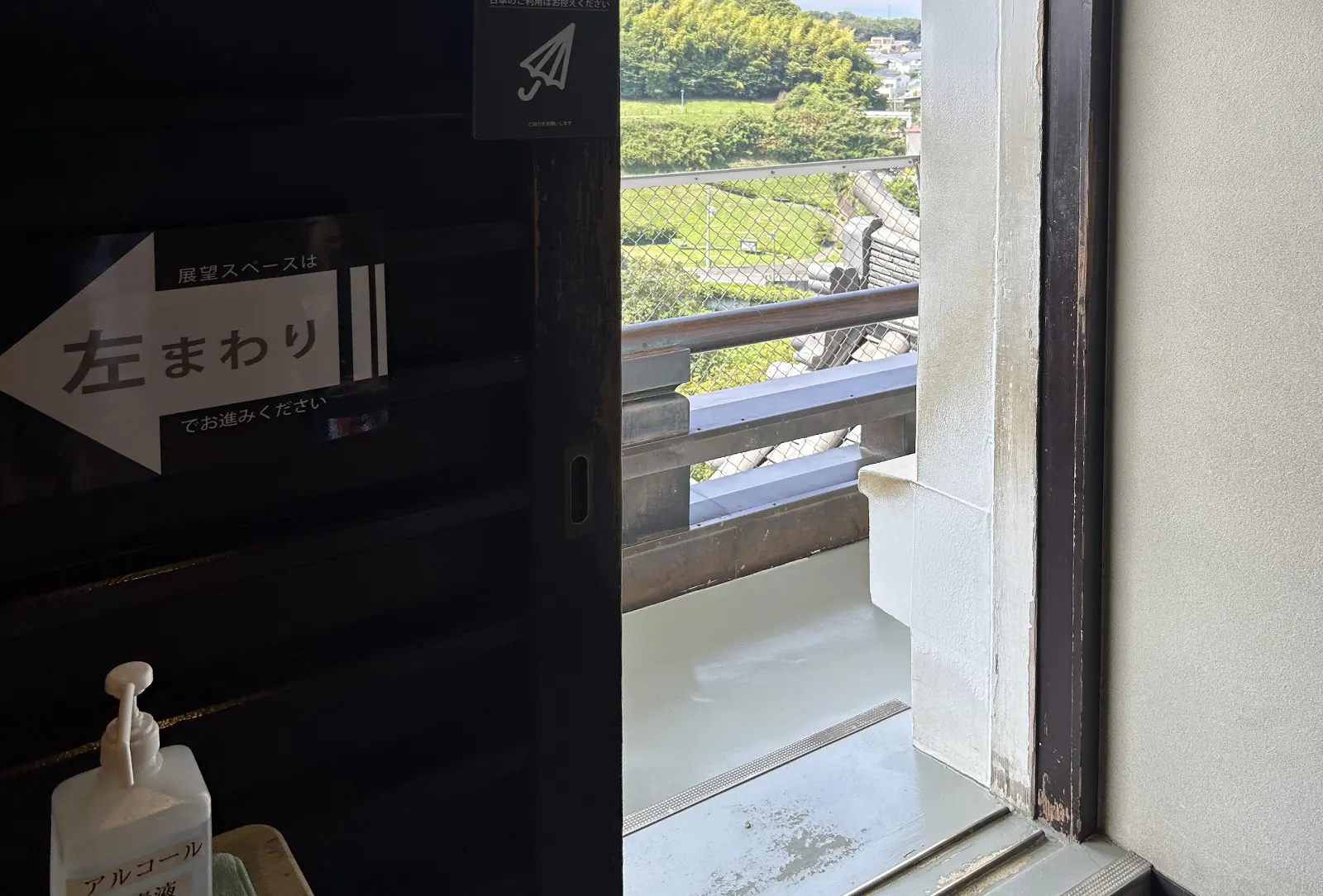
Step outside and—BAM!—the full panorama of Odawara opens up!
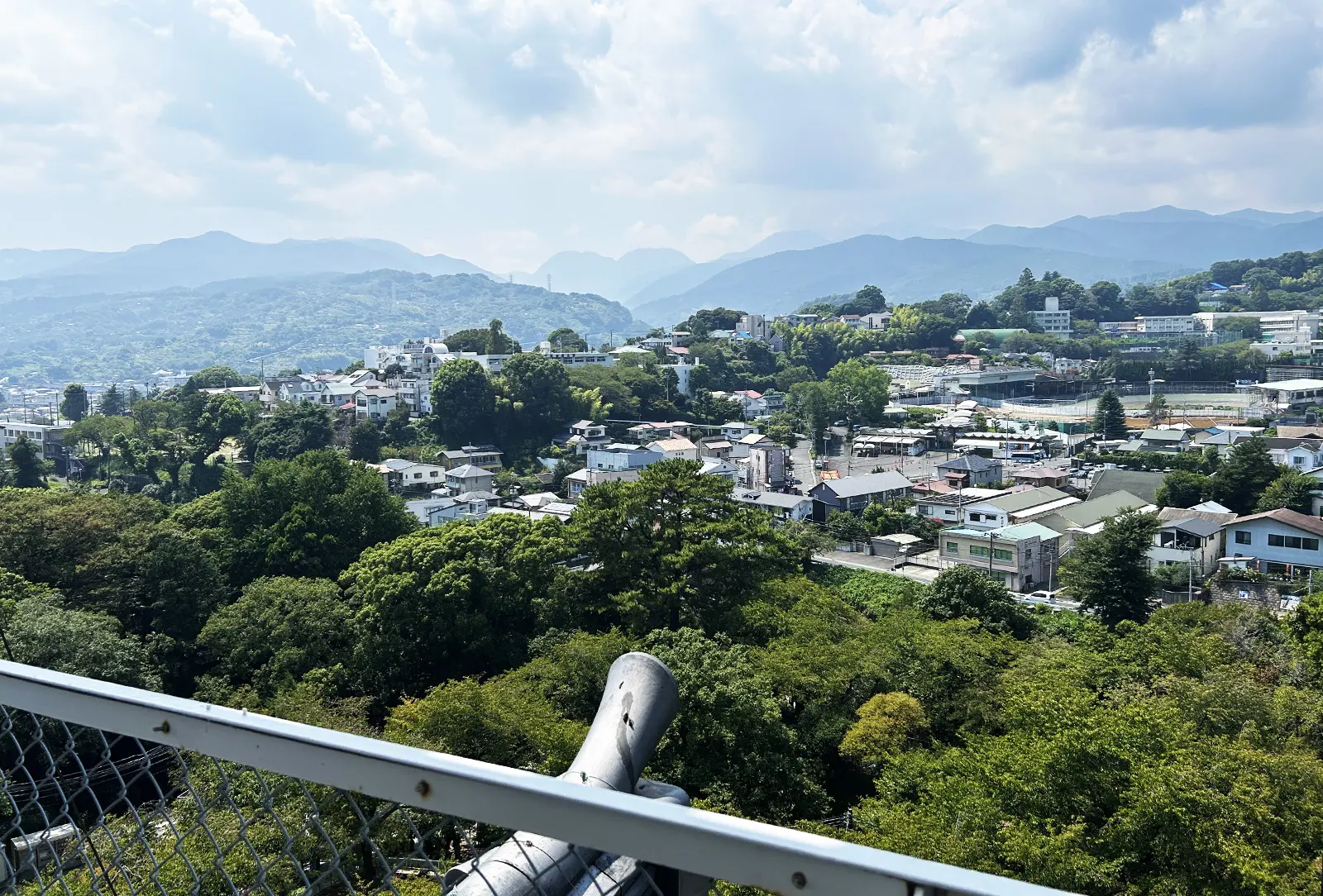
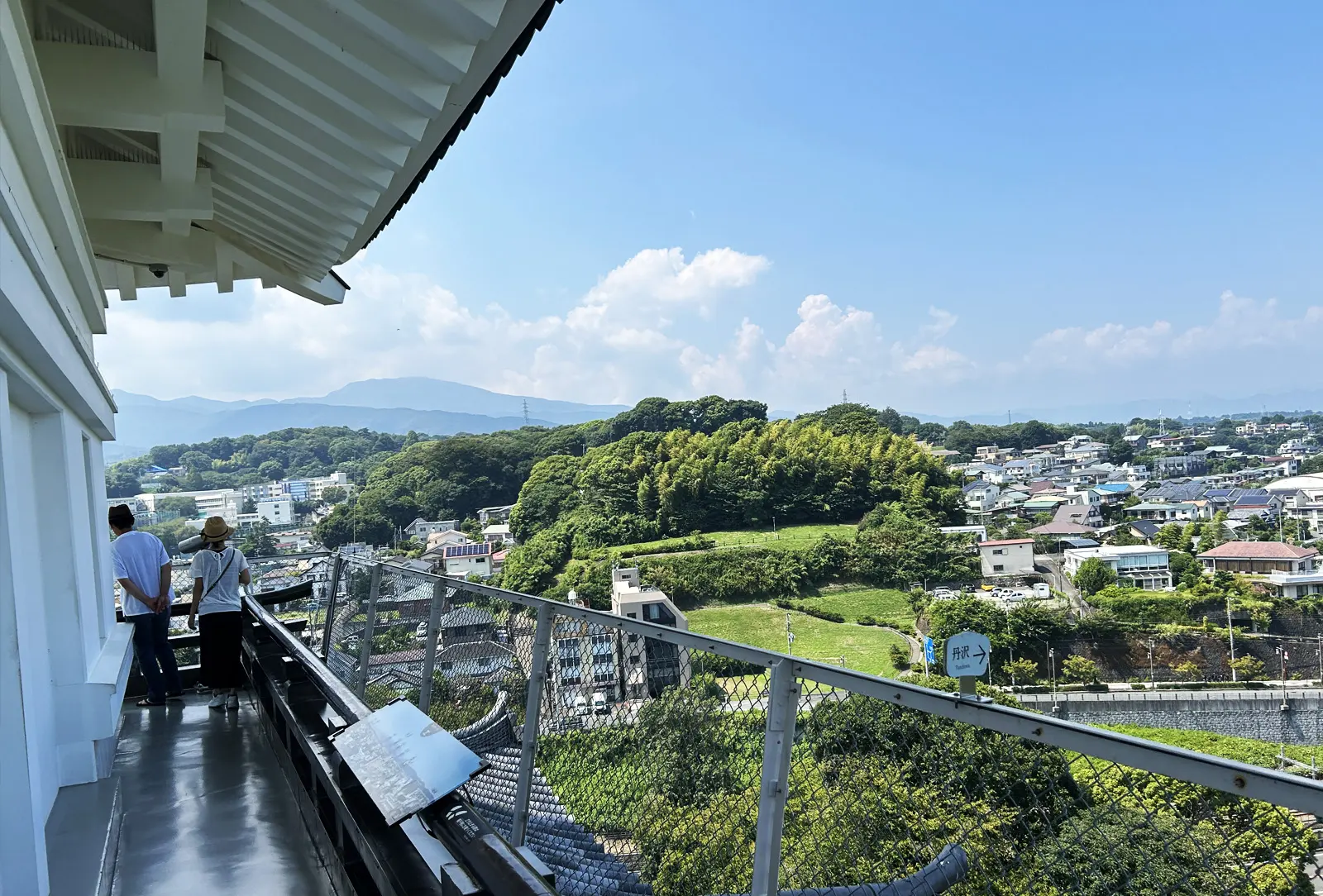
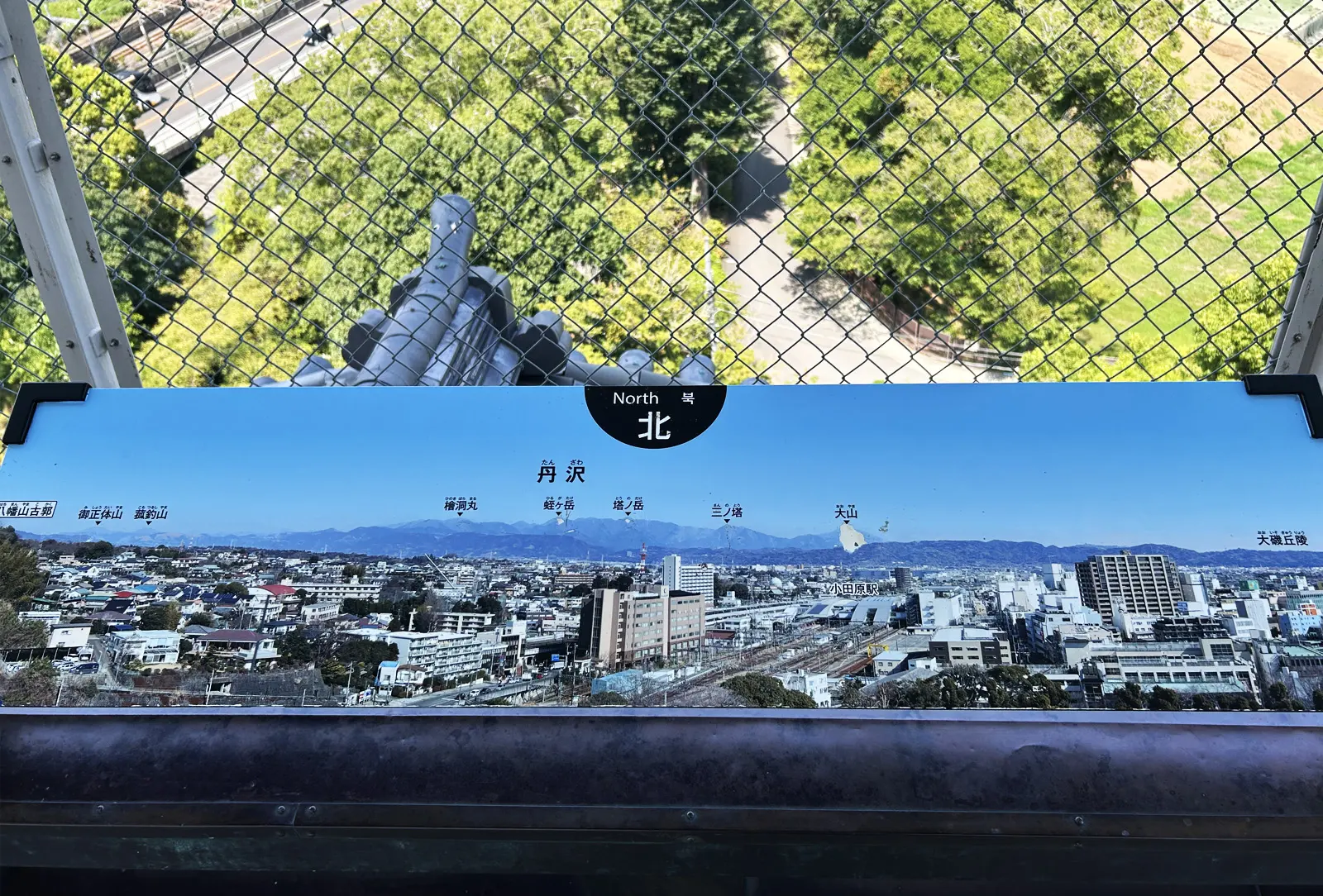
Looking at the modern skyline of buildings, I couldn’t help but imagine how unimaginable this view must have been for people of the past.
And here I am—an ordinary visitor—standing at the very top of a samurai castle, gazing out.
It felt deeply moving, blending history with the present moment.
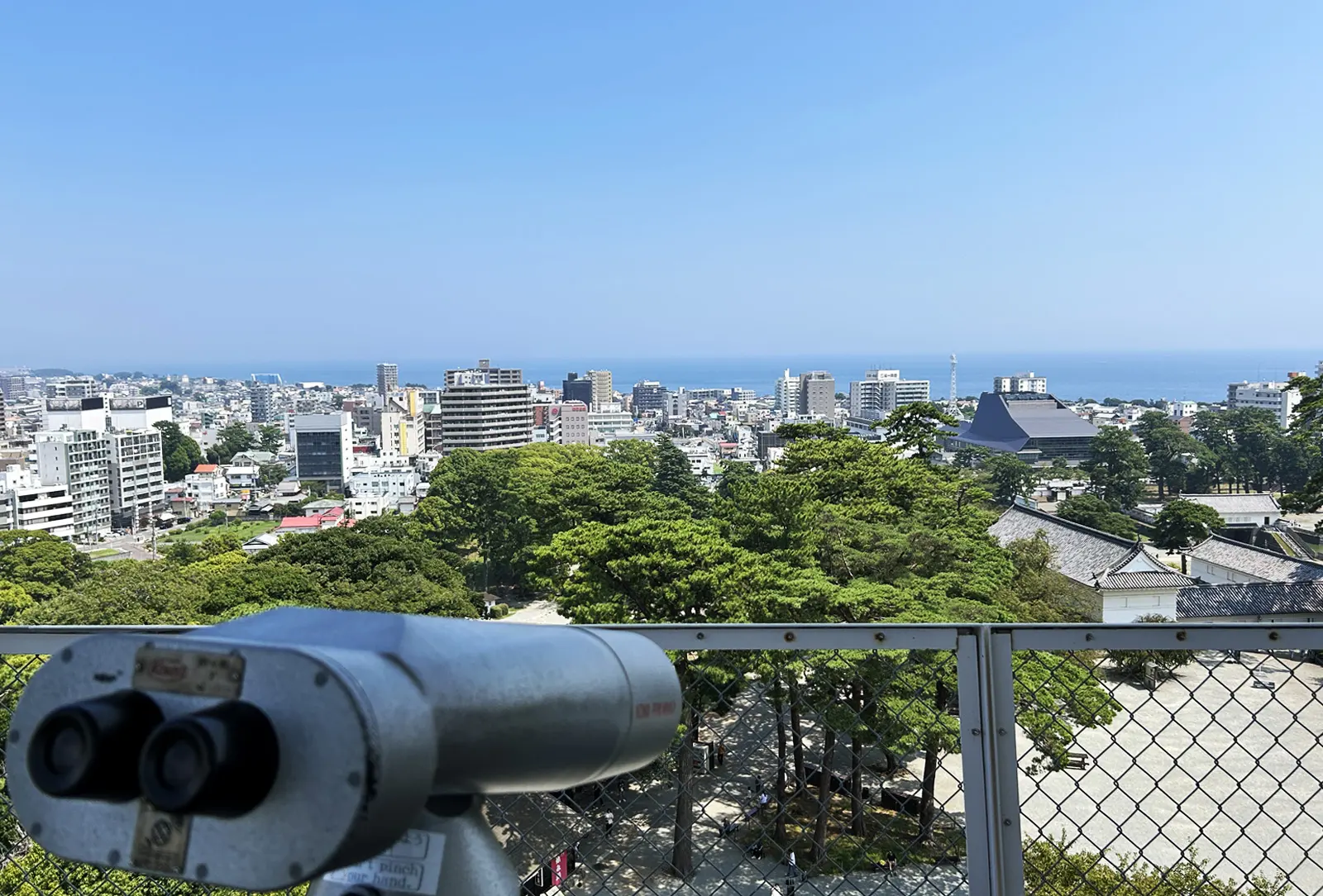
RAW JAPAN Comment
From collecting Gundam manhole cards to strolling through the castle town, and finally reaching the top of Odawara Castle, the trip was a perfect mix of history and pop culture.
The massive gates like Akagane-mon and Tokiwagi-mon were awe-inspiring, the exhibitions of armor and swords had my heart racing, and the Edo-era recycling technique of Yaketsugi revealed the cleverness of the past.
And the panoramic view from the Tenshukaku’s observation deck? Absolutely breathtaking—a reminder of both history and the luxury of enjoying it in the present.
Odawara truly is an “entertainment destination” that works for solo travelers and families alike.
You get your otaku fix with the manhole card, dive into history inside the castle, and top it off with a killer view.
Next up, I’ll be reporting on the NINJA Museum in detail—stay tuned!
Related article: Japan’s Manhole Culture is on Fire: The History Behind Sewer Covers
Obsessed with Japan’s quirks, and a father of two. I hunt for those subtle, “wait, what?” moments that hide in everyday life.





